|
Some gifts stay with you forever—others, you wish you could forget. In this blog, I'm going to talk about the greatest gift my mother ever gave me and how I'm still using it today, as well as the worst gift she ever gave me and how I'm trying to keep pushing it away. Happy Mother's Day to all the mommies out there! I also want to honor anyone where Mother's Day is really hard time, be it that…
I want to honor you today and these weeks because it can be super hard. I wrote this blog on Mother’s Day as I reflected on what made me who I am today. These gifts were given to me as a child, so I'll get into that as well. Now, let’s dive in. The best gift The best gift my mom ever gave me that I still use today is not a material thing. It's nothing that you can physically touch. But it's something that you can sense about someone. The gift that mom gave me was belief in me. She always believes in me. When I was younger, she believed in me in sports, at school and when I was speaking. Basically, in so many different places. I'm going to talk about each one and how that played out. She believed in me in Sports In sports, she always said, “You can do it, Diane” and “Go Diane”. She's British, and she’d put up her two thumbs and say, “Way to be! Way to be!” I’d feel embarrassed, but she was always saying,
That belief pushed me in sports, and I ended up playing coed soccer at a young age with boys at a high level. Because she believed in me, I knew I could do it. She believed in me in School There were high expectations at school and also high levels of belief. She believed in me and helped me believe I could get As, be the president of the student council and do well on tests. Because of her, I was able to do really well again. She believed in me in Speaking Another area where she really believed in me was my speaking. I would do the little contests in my class and then go speak in front of the school. Then, I think it was the Kiwanis Club that would put on the city speaking contests. She always believed in me that I would excel. Then I was invited as a junior in high school to be the emcee for the graduation ceremony. All of this has led me to be able to excel in academics, whether it be when I was younger, or as an adult, to excel in sports, and to really push myself and to go for things that maybe I wouldn't have gone for, like trying out for the varsity teams and making it and then being on the OUA all-star team, and also with my speaking to push myself forward to be able to do it and be paid. Having this strong belief in me, helped me to believe in myself when I didn’t. I didn't believe in myself all the time. When I didn’t, I would say, “I don’t think I can do that. But mom thinks I can, so therefore I must be able to. I'm going to do it.” Throughout my whole life, I've said, “I can do that. I can do that. I can do that” even if I didn’t think I could because it came from my mom believing in me, and then I started to believe in myself, which is really amazing. As an adult, after a few career changes, eventually to where I am now in coaching and speaking, as you know, and many other things, I got the great opportunity to be flown in all expenses paid to my hometown of Brantford, Ontario. I live in North Vancouver, BC right now, so I was flown across Canada all expenses paid and to a fee-paid speaking engagement. It has come full circle because I remember being young and my mom flipping her tea towel over her shoulder, cocking her hip and saying, “Oh, Diane, if you get paid to speak one day, you're going to be a rich woman.” That makes me laugh because, again, at the time, I thought that was belief in me. I think she was just super frustrated that I wouldn't shut up. I tell my mom, “You should come to this speaking engagement, Mom. I'm speaking. Come. Come.” She says, “No, I can't.” I said, “Yes you can, it's a public event. You can and I've secured a ticket for you.” She said, “No, I can't come. I can't come.” I said, “Why? It's in town. I'll drive you. I've got a ticket for you. Come see me speak.” She said, “Oh, I couldn't do that. I'd be so nervous.” I said, “Mom, I'm going to do a great job.” She says, “I know you're going to do a great job. But I'd be so nervous for you.” I was like, “Why?” She goes, “Well, I don't know where you got any of these gifts from, nothing came from me or your father. I just never understood how you've done everything.” That was such an eye-opener. While I'm saying these are gifts my mother gave me, they're also gifts my father gave me. My late father who passed 3 years ago. Since this is Mother's Day, I'm focusing on the mom's side of things, because she is the one that drove me everywhere. Dad was working quite a bit and travelling to and from work. Mom was the one who had to drive me everywhere like a taxi driver for me. But anyway, it's amazing how, by her saying that, I realized the gift of her believing in me was a bit of a lie. She believed in me but didn't always fully believe I could do things because of her own insecurities, doubts, and feelings of not having those skills and talents, but she never let that come forward. It made me think what a different life I would have had if my mom actually said those fears that she said she had herself. If she said, “I believe you can do it. I just could never do it.” Well, if she had said that throughout my whole life, I might have been more nervous. It really shows me the power that adults have over children. Also, coaches have to their clients, or coaches to their players, or teachers to their students. Anytime someone looks up to you, there is a choice to have that full belief in them. I joke with people and say, “If you don't believe in yourself, hire someone who does.” That's why I have multiple coaches for different areas. I also have people on my personal board who will support me and be a fan. The worst gift Now, let's do the flip side of this because while the greatest gift my parents have ever given me was belief in me, the worst gift my mom ever gave me that I keep trying to give back is actually high performance, that expectation or belief in me that I could achieve at a high level. This gift she gave me is not originally bad—it’s gotten me really far. It's the fact that when that got turned up so high, by continuing to go for things and compete and such, it actually turned into perfectionism. Can you relate to that? This belief in high quality, high performance, doing well, straight A's, honor roll, and MVPs, wasn't drilled into me by her that I have to be perfect. She always said,
But I translated that into it having to be the best. I never got yelled at for not performing well. But I turned it into perfectionism. The way this has been transformed from something wonderful into something not so good is also what we have to really be careful about. I have to be careful with my children and with my clients. For me, it keeps showing up as perfectionism, and I have to keep pushing that away and just go back to high quality and do your best. Otherwise, perfectionism is so stunting of my performance. What I learnt What have I learnt about the giving of these gifts to others? Well, many people don't have self-belief. But it can be manufactured from other people, imparting it on you. You have the power that before someone goes on stage to say, “I know you're going to do well.” Because in their mind, they might think, “I'm not going to do well. I'm not going to do well. Wow, this person just told me they think that I'm going to do well or they know I'm going to do well. I guess it's true. I guess they're not a liar.” Right before someone goes to do a musical performance, play a game, have a job interview or negotiation, have a difficult conversation, share your belief in that person.
Just share that with them. For the people in your life who you're around a lot, what if our goal was to continue to inspire, cheerleader, and believe in others? The world would be a different place. As I said, if you don't believe in yourself, hire someone who does or bring someone into your life who does because that can be the difference. Just having someone believe in you could be the one thing that helps you reach your goal of living your dreams. I know that sounds so big and grandiose, but I'm just extremely grateful for others’ belief in me. The flip side is if you didn't have someone believe in you, and you have someone instead cutting you down, it could have been its own gift, the worst gift that turned into a good gift. That was the fuel that said, “You know what, watch me, I'm going to do it. I'm going to prove you wrong.” But today, I hope that you take away the idea that believing in others is a good thing. Believing in others to a high standard is great, too. Set the bar high. Just make sure you check in on that person to make sure perfectionism isn't ruling them, stressing them out, causing them anxiety, or preventing them from going for what they want out of fear of not having the perfect result. Have the most wonderful Mother's day. If it is a hard time for you, just take some time to nurture yourself. That is my hope for you that you can find some solace in this time and some great friends who believe in you. And if you are looking for someone to believe in you… let’s have a conversation. Read my other blogs:
0 Comments
In my previous blog, I discussed the power of accountability and mentioned that I could share its negative side and what you should avoid. I listened to you. You said:
I'm going to give you the five things around negative accountability that you should avoid. I'll throw in some stories along the way as well. Soccer and accountability If you didn't know, I play soccer. I play in a 30-something soccer league in North Vancouver, BC. It is filled with some ex-competitive players like myself and newbies, people who've never played before. Not every team has a coach, but we do. We like having a coach for trainings, warm-ups, and deciding who's on or not. I personally like having a coach for accountability. “Oh, Diane, why did you do that? Let's do this instead.” Also to talk things through with me to help me be a better player based on what's happening. Also accountability for the team, “You're not showing up on time? You don't get to start.” I love that part of accountability with having a coach. It helps us to step up into a better place, more peak performance, and such. I'm not going to go through them all because they’re in the previous blog. I encourage you to check it out. But after our latest game, as we're sitting around having a little social time with the team, there is a very high-level competitive league that was playing right after us. They are girls who are 10-12 years old or a little older. They were playing very seriously. They videotape the game so that they can go through the games after. I remember that from varsity rugby when I played for Western. We didn't have a video like this big pole thing that they do high-definition videoing. It’s very different. But we used to do stats. The stats were on:
All of these things, along with my kicking for posts, were tracked so that the coach could review them and then make an accountability plan for everyone. I'm watching this game with these girls. I know that there's going to be mega accountability after the game from watching the tape. Also, they said something like you can zoom in or tell the video to specifically look at one player, and it will track that player in the game. Pretty crazy. That’s high-level accountability. It’s great because it will help them be better players, learning from their mistakes. But what I heard from one team, with a group of coaches, was yelling.Lots and lots of yelling.
Sometimes sadly, it was conflicting. That made me also want to share that accountability coaching has to be the right coaching and the right type of accountability. This was not! Think about the times in your life when you've had the wrong accountability. Obviously, no accountability at all isn't good. I have accountability through coaches for so many areas of life. As you know my journey with my health and losing weight, I had a coach and a key part of their job was accountability. I now have a comedy coach who's helping me develop some sets for events or comedy shows that I've been doing, as well as putting it in keynotes. So I have deadlines when I have to have things done for them. That's all wonderful. Let's look at these five things and I want you to think:
Side note, I don't want to forget to tell you that She's Goaled 2.0 is open. It is a speed course to reach your goals. Every month, we have a new set of goals and weekly check-ins which help with accountability. There’s mastermind power with a supportive group of like-minded top achievers. As well as coaching support and strategy from me. Network growth on the Goal Sister calls where you connect with another woman in the group and have that accountability. Then at the end of the month, we look back and review:
Accountability is a big part of it, but it's done positively. The doors are open for that, and they close on May 16, 2024. I hope you'll join, as it’s a program I’m really proud of. Okay, let's go through the five. #1: Stress buffet Think of accountability like an overzealous diet. Everyone thinks it's going to make them healthier, but it's not because it ends up stressing you out. If we have too much accountability, then your workplace and your day-to-day life are going to feel like you're in a pressure cooker. There's no room for error. Everything is down to the tee. Then what does the pressure cooker do when it gets too much stress? It blows up. Imagine a geyser blowing. We actually had that happen on our kitchen ceiling. Soup had flown right up into the ceiling, leaving splotchy marks. We don't want to stress from too much accountability. There's that nice place where my clients say, “Oh, I just got everything done last night because I knew I was meeting you today.” Then there's the place where they say, “I was really sick. But I still did what I had to do, even though I was in the hospital because I knew I had to do it.” There's no room for error. We don't want you to be super stressed from accountability, but we want enough stress to push you to do something that you wouldn't normally do. With soccer, as I talked about in my previous blog, I do more because I have a coach or I do more because I have accountability. There's that nice amount that pushes you and stretches you a little bit, really you just want to be 1% better every single day. We don't want though the accountability to be turned up so high that you feel too much pressure and you're stressed out. #2: Confidence Killer When you're obsessed with following the rules, it can kill your confidence because you think, “Okay, this has to be. This has to be. This has to be this way, and this has to be this way.” Somebody's breathing down your neck. Accountability can actually turn negative. Then you're doubting yourself because it's so strict that you lose the confidence that naturally would be intuitive to you, your skills, and your talents. We don't want there to be too much in following the rules because that will kill your confidence. What I like to do with my clients is if their homework is not going to get done, I ask them to email me saying, “Hey, Diane, this homework is not going to get done because these other opportunities came up and I had to put them first. This actually is a better idea. I'm not going to do that homework. I'm going to do this instead to reach the same goal.” Perfect. Okay. Cool, good plan. That's what I want to hear. Or “Hey, Diane, I know I said that I would contact 20 people by our next session, but I'm probably only going to be able to contact 10 people because I now realize that it takes too much time or I only have 10 people in contact. I actually don't have 20.” Giving the reasons but then saying what you will do instead is great! Maybe the date is the wrong thing, so by the next session, you're like, “I can do 20 people, but I'll need a few more days after the next session to make it happen.” Rather than not being able to make your own decisions because of that overcontrol, you get to step back into your confidence by amending the goal. #3: Creativity Crusher When things are micromanaged too much, it can really squash your creativity, pretty much like a flat pancake. If there's too much rigidity, you'll become scared to make a move. We don't want you to be scared to make a move because you're trying to do things so strictly, which means you can say goodbye to some of those out-of-the-box ideas, maybe a wild idea, like a 2AM wakeup idea, driving in the car with your kid to soccer, or doing a late-night coffee run. We want you to have creativity. Good accountability helps you reach your goals, and the creativity it gives you might mean that you can reach your goals faster than you would have thought. It comes back to what I was sharing last time, if you see a better option to reach your goal, then ditch the normal way that you were going to do it. For example, my plan to write my book was me at a computer writing a book. Then based on some circumstances, I realized, “Ah! What I'm going to do instead is create a five-week course, teach people the content, and then that's going to become the book.” By having that creativity opportunity, I was able to think outside the box to write my book. #4: Short-sighted goggles I wear contacts. I feel like I can't see far. Recently, I realized I can't really read the pill bottles. That's making me feel old. I wanted to commit to reading my Bible four times a week, but I'm just not loving the thin pages, and the words are so small. I asked friends if they had one with bigger fonts in it. Then one of them said, “Maybe you just need reading glasses.” I was like, “No, I'm good.” I put hers on anyway. It turns out I just need reading glasses - haha! If you're ever not wearing your glasses or you can imagine wearing dirty sunglasses, and you just can't see, you're wearing short-sighted goggles around accountability. You're so focused on hitting the next target that it's like you're wearing binoculars backwards because you're just like, “Okay, I got to nail this goal tomorrow. Then this goal the next day, and then this goal and then this goal.” You're seeing everything really close, but you can't see very far. With too much accountability, you're not going to be in that long-term big picture ever. Now, your coach should be looking at what we call in CTI Coaching the “Big “A” Agenda.” They’re seeing the big picture for you. The good part of accountability is you get to be in the “Little “a” Agenda”, the little pieces, the day-to-day, but your accountability coach is going to help you to also see the big vision so that when if you're staying in the short-sighted goggles, you're going to come up to a problem and you're going to be like, “Oh, I'm stuck and I can't do this.” They're going to say, “Hey, remember what the big goal is? Remember, this is only a blip on the way there.” “Hey, remember the last thing you did? You were able to get past that because of this, so let's keep going.” They're going to be able to help you, but if you have the wrong accountability, they're going to be so stuck on the next piece and not the big picture that you're going to lose out and you're not going to enjoy it. #5: Scaredy Cats If you are in a high accountability zone and the person holding you accountable is extremely military about it, the fear of messing up can actually turn everyone involved, including you into a nervous cat in a dog park. Can you imagine being a cat in a park full of dogs? You're on edge, your back’s up. Your claws are in the ground, and you're like, “Well, where is the next crazy dog coming from? Where is the next thing I need to avoid?” That is not a place to be functioning. You don't want to be in that place of, “I want to avoid the next problem or the next opposite obstacle.” Instead, you want to be able to look at the opportunities, jump on them, and then learn from mistakes, so you shouldn't get yelled at, you shouldn't get someone belittling you with accountability if you make a mistake or if you don't meet a target. You should have someone who can nurture you along so you're not scared of the process, so you can see the big picture and learn from any mistakes you've made without that fight-or-flight cortisol hike that can happen out of fear. I played varsity rugby. I used to be a little bit nervous with my coach. There was some heavy accountability there. But once I got to know her more as a person, and she started to open up to me and give me positive reinforcement, telling me what I'm good at not just the things I'm not good at, not being a confidence killer, that really helped to nurture me. I was encouraged by her accountability. When I look at those soccer girls, I think:
I know that on the soccer field and being a young girl is very different from your life. But there are so many similarities, and I'm sure you can think of a time when you felt that way, even if you never played soccer or never played high level, or never had a sports coach. You can imagine a time in your life when that's been the case. Wrapping Up What I encourage you to do is make sure that you have the good side of accountability, that you avoid these five different ways that accountability can be bad when used in the wrong way, or when turned up the wrong way or when you hire the wrong accountability coach. Again doors are open for She's Goaled 2.0. I promise you, these five bad sides are not part of the program. There is no stress buffet, no confidence killer, no creativity crusher, no short-sighted goggles, and no scaredy-cats. It is a very positive learning environment. However, I will hold you to your goals because I want you to achieve more. That's the good side of accountability! Read my other blogs:
Have you been wanting to achieve something but you feel like you just don't have that last piece to push you to get there? Well, maybe accountability is the thing that you need. Today, we're talking about the power of accountability. You may be thinking, “Well, I already know all about that.” But what you may have forgotten is, that accountability in every area of life, towards every single goal you ever have, can be the thing that gets you there and helps you achieve it faster. Maybe, it's even more enjoyable. (I'm thinking about doing another blog on the disadvantages of accountability and how it can get out of hand and not be good for you. Let me know in the comments if you’d want that, and I’ll put that together.) Some of the earliest times I had accountability was with my athletics. It continues today, but also in every area of my life. I've always had accountability because I was a pretty high-level competitive athlete (No, I didn't go pro or anything). One of the times when accountability was really necessary was when I played varsity rugby. We had off-season time, which was basically 10 months of the year. The season was only two months. To be fit for the season, we had to follow a full year-round fitness plan. It was intense. There were times when we bulk trained, meaning we lifted very heavy weights, low reps, in order to build mass or build bulk. There were times of the year when we looked to build our endurance or ability to be able to last through a full game at our full intensity. There were also times in the season when we built our speed, agility and rapid movements. Then there was the maintenance during the season when we just had to maintain where we were at. Throughout the season, our muscles were getting beaten up and injuries can come in. It's just maintaining where we're at. The coach wouldn't have us train with the team every single day. But we needed to do the plan on our own. The threat was that we would be having random fitness testing throughout the year. I’ll tell you, to be randomly fitness tested is scary if you are not keeping up with the fitness plan. Fitness testing included the 12-minute run: running laps. It also included the beep test for the short sprints. There were pull-ups, bench press, leg press and a whole bunch of other things. I can't remember it all now because that was over 20 years ago. But we had the accountability of these major check-ins throughout the year. We didn't know when it would happen. We'd get a call or email (this was before everyone used a cellphone), and they’d say, “Hey, we're doing a fitness testing in two days.” Well, if you hadn't been committed to the fitness plan, it's going to show. You're going to be weaker than you were before. I had to come up with some accountability for between those different times. Accountability to be going to the gym, pushing myself, and sticking to the plan. The funny thing is I joke with people and coaches that I don't like running, and that's why I need a coach to tell me what to do. I need to play a sport to push me because I'm going to run to get the ball. I'm going to run to chase someone down. I'm going to run hard to be able to shoot, but I'm not necessarily going to just go and run, so I needed something or someone to get me there. The accountability was my teammates. We would commit to each other and be accountable to each other to meet. I had accountability with certain fitness classes and sessions. Over the years, I’ve had accountability with a personal trainer or accountability with a class. Having that accountability was crucial for me to be able to stay as a starter on the varsity rugby team, the highest point scorer in the league because of my kicking for posts and becoming an Ontario University Athletics (OUA) all-star. If you’re wondering, I grew up in Ontario in Brantford playing for the Harlequins and I went to the University of Western Ontario in London and played for Capilano in North Vancouver, BC. Over the years, I’ve known I needed accountability in not just sports, but in taking on some of my bigger business goals, like doing stand-up, writing a book and launching my elite Coaching Mastermind Program. I needed accountability from my coach, my mastermind peers and business advisors, and so on. Also, in my most recent fitness goals, I needed a coach. I needed accountability. That check-in where I posted photos of my food every single day, five times a day, and plugged in exactly what I ate and how much I hate. That accountability is crucial. Side note, I want to let know that the doors are open for She’s Goaled 2.0. It is a coaching mastermind program like a speed course to reach your goals. They're small groups where you get the coaching power from me, the mastermind support of the group, and the accountability to be able to reach your goals. Six Benefits that Give You the Power of Accountability As I go through these different benefits, think about where in your life could you benefit a little bit more from some accountability. Benefit 1: Trust and reliability vibes. If you think about accountability, it's really the glue in relationships whether you're dealing with friends, a boss, or maybe even clients. If you are able to be in that place of being reliable and accountable for things, other people will throw trust your way. If you're able to have accountability, in a goal or accountability with a team, and you are accountable to someone, and they see that, then they're going to start trusting you, and maybe sending referrals your way. Even if you're not getting accountability towards a goal, having just some accountability partners in your life, people that you're accountable to shows the type of person you are. Benefit 2: Boosting your performance. When you're accountable to someone else like a coach, business coach, life coach, or people in a mastermind group, it really keeps you from slacking off. Because you know, “Oh, I told them. They're counting on me to do this.” What that's going to do is help you perform at that higher level. I know for me that that was a huge game changer for me with sports. Even in my business, if did a weaker job or I just slacked off a little bit, I would let myself down, but I never wanted to let them down. The accountability helped me because if I trained on my own, I might run slower or do less weight. But when I actually was accountable to others, and they would see my progress, I would be embarrassed if I was performing at a low level. I always perform higher for someone else. I always pushed harder for someone else. The same is true in my business. When I am accountable to someone, I do better. Where in your life, could you do better and boost your performance because you're accountable to someone? Benefit 3: Captain responsibility. You get to be the captain and the owner of the things you're responsible for. When there is accountability, you have to own up to your actions. It also means that everyone is responsible for their own piece if you're on a project and there's accountability on the project, in the team, or in a group. They're going to look at you and ask themselves, “Okay, do they take responsibility for when things aren't going as they should? Are they steering themselves and us away from the trouble?” You’ll get the benefit for being their captain and so having that accountability with the group means that you're going to have more responsibility for your own actions, while others will be responsible for their actions. You get to take ownership, which is a great thing, rather than in a project not knowing who is responsible for what. Benefit 4: Learning loop. When we make a mistake, we want to be able to go, “Ah, oops, I did that wrong.” Then have that “AHA” moment of, “I should have done it this way or I could have done it this way.” A lot of times without accountability, we will beat ourselves up and stick to the negative of it, rather than moving to the learning part. It's like, “I made a mistake. Oops. Ahhh, that's what I learned, and now I'm going to make this change.” We get to go back into it by having that learning loop. But if we don't, and we don't have accountability, then we don't have anyone else to help us move through it, or to not be so hard on ourselves. When you learn the ropes of something and learn the lesson in it, it's really going to help you get past it. Then you’ll keep going towards your goal. Benefit 5: Fair play. When you have accountability, there's more fair play in a group setting. When there's accountability, it's going to make sure everyone is playing by the rules. When you have accountability for you reaching one of your goals, you want to make sure that people you're accountable to are going to call you out. Call you out when you've done something that is just not in alignment with how it should be. Not necessarily calling you out on the mistakes because we want that learning loop to happen, but wanted to make sure things are fair, and things are done right. If you are trying to cheat in some way, they're going to call you out. When I would work out with people who were my accountability partners, and they saw that I was maybe bench pressing, but using more of my back than using my arms and my chest, then they're going to call me out and go, “Hey, your form is not right.” This is also excellent for your own learning and your results. They're going to see, are you doing your fair share of things, if it's a group? Any rule breakers in a group setting will be called out for it, and maybe even given a timeout. It will help when you're going for your goals to make sure there’s fair play because you might not even know what you should or shouldn't be doing. You might be doing something that's going to hurt you in the end because you haven't done everything as it should be done. That might be the case for processes and systems or if there's been trouble in going towards one of your goals if someone else there. People can help give you some extra ideas, or share how that industry works, or the moral or value-centered way of doing something. Benefit 6: Transparency. Your actions will be transparent when they’re seen by others. It's going to help keep things super clear for you. No mysteries of, “Did I do that?” or “That didn't happen that way”. People are going to know that you did or didn't do something. That's usually where we think of accountability. If you have an accountability partner for the gym, you're going to have to tell them you went to the gym or show you went to the gym, or you didn't. It's black and white. You did or you didn't. In this case, when things are transparent, it will help you get to your goals because you're not going to be hiding or kidding yourself. You're going to know when you're not going to reach your goal if you're not moving along. Your accountability can tell you. Many times I've met people, and they've said, “Oh yeah, this year, I'm going to write a book” or “By next mastermind, I'm going to start my program” and then you see them next mastermind they haven't done anything. Well, it's because no one has called them out on it. Sadly they will let themselves down and they're not really seeing what the problem is. Bonus: The accountability is going to actually keep you on track. I didn't add this earlier because it seems like the obvious reason. If you're not reaching your goals, if you're not even starting on some of your goals, it could be that you're lacking accountability, and someone to call you out on it. When I work with clients, and they're not getting towards the goal, I need to call them out on it. That's the accountability factor. I had one client say to me, “I have a bad habit of cheating myself, letting myself down and not stay committed to what I said I would do. I want you to call me on my BS. So if you see that I am providing excuses, running around not doing what I'm supposed to be doing, I want you to call me on it.” That's really what the power of what coaching is, to say, “Come on, why aren't you doing this?” I've had this in both ways. One way is, “You're not doing this as fast as you said you would be doing this.” On the flip side, I've had someone call me out for doing too much, “Hey, you need to like wrap that up, you're doing too much of that.” Or even, “When are you going to stop in this story, so that you can actually get moving forward?” Because sometimes we get stuck in the being, and when you do, just get into the doing. It’s vital to have someone outside of us see that and call us out. Even not just call us out, but call us forward toward where we want to go. I tell my clients, “I'm going to take a stand for you and your goals even when you don't.” That's the thing, having someone that you're accountable to that is not worried about hurting your feelings, and is strong enough to be able to call you out. That's why it's crucial that is not a best friend. It's not a family member. That it's someone outside of your immediate circle. That's why I hired the person I did for my health goals. I knew she's intense. I wanted to be called out when I didn't do it. Some of my clients will say, “I got everything done, but it was last night because I knew I was meeting you today. I knew I had to do it.” Perfect! They got it done, and accountability helped. Well, can you imagine if we didn't meet? Do you think they'd be getting that done? Probably not. Wrapping Up There are a lot of reasons for the power of accountability. I hope you have accountability in different areas of your life. I encourage you to join the She’s Goaled 2.0, where you’ll get weekly accountability support so that you’ll reach your goals. It's not enough to have accountability once a month. It's not even enough sometimes twice a month. You're going to get accountability four times a month. Every single week, you get accountability. What I found is it moves people very quickly towards their goals in a way that is manageable. Because rather than you busting your butt right before you meet a group, maybe every quarter, this way, it's going to help you to have a consistent routine and effort towards your goals. Check out She’s Goaled 2.0. We'd love to have you be part of it. Read my other blogs:
Do you have a dream or a desire or a habit that you want to change? But you've been sitting on it and you haven't? In this blog, I’m sharing about a common question I ask clients, “What are you waiting for?” You have something a dream or desire a habit that you want to change, but you're not. Why are you doing it? What the problem is causing now that you're not doing it? What you're missing out on and what you can actually do to get moving? This is what I'm going to be exploring today. (Sidenote: Doors for She's Goaled 2.0 are open right now. It's your speed course to reach your goals. A six-month program to give you coaching and mastermind support, and a group of like-minded women to help you reach your goals.) What are you waiting for? I coach people. I have powerful conversations with people I meet. As a speaker, I chat with people in the audience. What I've been finding is people very often want to do something.
But they just don't do it. If it's a habit, then it's something like…
Whatever it may be, the question I want to just scream out is, “What are you waiting for?” Sometimes I have to ask myself that tough question, too.
Ask yourself these questions:
When you're in that place of not doing something that you really want to do, you're telling yourself…
The saddest thing is when people get too old or too struck in responsibility or lack of that they're just not able to do it. There are different people I meet who eventually have mobility issues, health issues, or a loved one was taken too soon, and they don't get to realize the things that they really wanted when they were younger or healthier or really desired it from the beginning. So what are you waiting for? I'm going to say that many, many times in this blog. The psychological or practical factors that are stopping you from taking action towards your goals There might be some psychological or practical factors that are stopping you from taking action towards your goals. Maybe you want to do this big trip, but you just don't have the financial means. Maybe you want to quit your job, but you're the sole breadwinner, and it's pretty scary to think about leaving your job to have the lack of stability in your finances. I get that. I get that you might have health issues that are stopping you. But there's always one way or another to do it or a modified version of the original desire. Let's really figure out what are the psychological or practical factors that are stopping you from doing what you want. Maybe it's a lack of clear goals: When you don't have those specific, achievable goals, it can feel like you don't have any direction, any focus, and then you lose motivation. If you have clear goals, you're going to have a roadmap and reasons to act. But if you don't have clear goals, you're going to suffer from overwhelm. You're going to be overwhelmed by how big the task feels. Most of the time, it's just an unknown factor. I didn't know what it would be like to write my first book and publish it. Now, no problem. Hand me something, and we can bang out a book in a few days sort of thing. It's not an overwhelming feeling now, because I've been able to know the scope of the actual project. But you might feel overwhelmed because you have poor planning, you have unrealistic expectations or even a lack of prioritization. You don't have clear goals and a clear plan, so you feel overwhelmed. Habitual Inertia: Maybe you're also trying to take it all on yourself. Now, if it's around habits, you may be afraid of change or kind of opposed to change. Something called habitual inertia where you stick to these familiar routines, familiar habits, even when they don't serve you, because it's easier than changing. For me, it's like, I'm not a morning person. Well, maybe if I just got myself to bed earlier then I could get my butt out of bed in the morning. Is it really who you are? People say, “Oh, I'm not a planner.” Well, could you learn how to plan? Because you've learned a lot of things in your life: to be able to eat and walk and dress yourself and have good hygiene. There are a lot of things that you've been able to do. I get the change. It does require us to give some effort. Sometimes change also means we don't know the outcome. But really, we also don't know the outcome of reaching a wonderful goal, desire, or habit that we want to make better. Isn't it worth the effort if we know that there's going to be some sort of payoff? Poor Time Management: Another reason why you might not be going to do what you wanted to is you're prioritizing everything else instead, and you have poor time management. Let's be honest. If you're playing games on your phone, if you're watching Netflix, if you're kind of pushing papers around, checking out social media, maybe that's why you don't have time to do the things that you really desire. Other things that are causing you to have poor time management, like procrastination, that's maybe another reason why you're not going for it. You're delaying tasks that need to be done. You're putting them off. Maybe it's because you have no motivation. Maybe it's because of another reason like you have a fear of failure: Is that what you have? It could be. When you have a fear of failure, you don't even want to try it. Or worse when you have perfectionism, you don't want to finish it. You put all that work in, but you won't finish because it's not going to end up the way you imagined it. But the sad thing I see is that people don't spend the time or invest the time to figure out, “What is stopping me? What am I waiting for?” My clients that come to me and I ask them this question, bravo, amazing. They're exactly where they need to be because they're getting the support to get the awareness. Understanding the reasons, the barriers, and the obstacles, is the first step in overcoming them. Awareness is key. As soon as you have the understanding that this is a psychological problem that you're dealing with, you can then address them. You can then focus on them and be able to have some practical strategies and mindset changes to be able to get through it. What you can do I don't want to just give you the problem and point this out in your life without some action items. Really, I'm hoping I stir something in you because I'm sick of seeing people living in black and white, living in a place where they're not where they want to be. They don't have joy, and they've lost their spark. I want you to have what you've been waiting for. But to have it now. First, figure out, “What's the thing that's stopping me?” Maybe it's the list that I've shared. Maybe it's something else. Having a session with a coach like me can really help to pull out the true answer here. The next thing is, once you've figured it out, I urge you find someone to support you through this. It could be a coach or a counsellor. You need some accountability to be able to move forward. Seek support. What you can do is just take one small step. Figure out what's the desire, the habit, or the thing you yearn to have be different or to have in your life, and then come up with what's the very first step. Once you know what the first step is, and you know 150% can go for it and achieve it, then just commit to that, and do that. Then at that point, you're going to gain confidence and motivation, which are actually two other pieces that could be holding you back and causing you to wait for what you want and to wait for going for what you want. I challenge you, as you're reading this, to be thinking, “Okay, what is that first step?” Get some clarity on that first step, and reflect on, “What is stopping me?” I'd love to hear love to hear from you. What is the thing stopping you? Is it procrastination? Is it perfectionism? Is it a lack of resources? Is it…
I'm glad I wrote these down because there are so many of them, and there are more. These are just some of the main ones that I see. I don't want for you to be in a place where you say…
You have an opportunity to realize what you've wanted and to not wait for it anymore. Let me know in the comments or shoot me an email [email protected]. Share with me the thing that you've been waiting for. What is the thing that's been holding you back from getting it? What is the first step that you're going to take? Again, doors are open for She’s Goaled 2.0. I encourage you to jump in and have us support you in reaching your goals, desires, habits, and dreams that you've been wanting. Because you'll have the accountability, you'll have the coaching support, you'll have the group's mastermind support, and you'll have timed actions so that you can move forward. That's really what I want for you. Because you are brilliant and you have great skills and talents and the world needs to see more of it. You need to be able to invest in yourself so that you can have the life, the business, the career, the family, and all the areas of life to be how you desire them to be. Until next time, stay dynamic. Read my other blogs:
This is the third part in a three-part series about being a collaborative author. In this one, I'm sharing the five reasons to be a collaborative author when you have a book or are currently writing your own, or have been in a collaborative book (You can read the first two parts of this series where I shared about the three ways you’ll get left behind by NOT being an author and what to look for in collaborative book opportunities.)
Leadership Secrets is coming up in the next year. Our first call for authors closes, April 17 at 11:59PM, where we have the opportunity for 18 women to jump into co-authorship with us. This is part of why I'm doing this three-part series. On April 15, we also have a training called Collaborative Author 101: How to Explode Your Audience, Establish Your Authority, and Leave a Legacy by Entering the World of Co-Writing. If you missed it and would like a replay, please reach out to [email protected] as soon as possible so that we can see if we can get that to you. Depending on when you reach out, we might even be in our second call for authors or we might be able to squeak you in the first. We'll see. No guarantees. There are so many benefits to being in a collaborative book, and we offer so many bonuses when you’re in Leadership Secrets. Now, here are the five different reasons to be a collaborative author, even if you're already an author, or you're writing your own book. These are also for you if you were already part of a collaborative book. You might think, “Well, I'm already an author, why bother?” Well, there's actually a strategy for why to be an author. I've been part of collaborative books from other people, and even if they don’t have all the strategy pieces that I want, there’s still some benefit to it, and I still do it. You can read my previous blogs where I talked about what to look for in collaborative book opportunities and the previous one to is about the three ways you'll get left behind by not being an author. But today, I want to speak to those who have had a book, who are writing their own books, or have been in a collaborative book and are thinking, “Why would I bother being a collaborative author?” I'm going to talk through these five pieces. Because I'll tell you, I felt the same way. Reason 1: It's a jumping-off point. Some authors who have been part of Dynamic Women® Secrets Books have used this as a learning opportunity to then jump off and do their own solo book. They’ve been able to build confidence as a writer and also be able to say, “Okay, I'm a collaborative author, and this is the first book and now I'm going to be a solo author of my own book.” Then they go on to do their own. If you're writing your own book, now's a really great time to invest in this type of opportunity with us because you're going to be able to have our book come out, and then your book. Sort of like “Bam, Bam.” You get to leverage my network and our promo to then position your own book. Here's a little bonus tip: You can bundle the books when you go to sell them as a way to make even more money to get a double sale rather than just a single sale. If you already have a book that's out there, then you can use this opportunity to link it back to your book that you've already done. Cool, eh? Reason 2: To plant the seed. If you're currently writing your own book, then you want to plant the seed to the readers that your book is coming out. You can plant the seed forward to the next book or you can plant the seed backwards to a book that you've already done so that the people reading this collaborative book with us can go back and purchase the book that you've already done. Planting the seed for a future book, a past book, or a current book is a really amazing reason to be a collaborative author. I've done that a bunch of times. In one book, I talked about being a Dynamic Woman. Then I linked it back to the Dynamic You™ Book. I've also been in another one where I talked about the importance of celebrating our successes and linked it over to the Dynamic Year journal. You might even write your piece as something that will open up an idea that is then more thoroughly talked about in your own book or in another collaborative book. There are different ways. I can even write in someone else's collaborative book about the importance of being a collaborative author and link it back to my opportunity. It doesn't even have to be directly to the book. It could be to other opportunities or offerings. Reason 3: To build your audience. How do you build your audience? Well, the obvious one is you’re building your audience with the readers who buy your book from you. You're also building your audience by the other authors selling it to their audiences. Plus, you can build your audience by leveraging your own social media promotion before the book even comes out, and when it’s out. What you might not have thought about for your own book or even with a collaborative book is to share the content from other authors or commenting on their posts to gain more connections and followers. What you might not have thought about for your own book is the power of the publisher, in this case it’s me, promoting you as an author to my network. As I mentioned in my previous blog, you want to be looking for full promo from a collaborative book opportunity. It’s them promoting you and also giving you lots of promo materials for social media, emails etc. that they have designed personalized to you. That's a really key thing and strategy. That's something we teach in our book opportunity. Reason 4: Build your network. You might be like, “What's the difference between audience and network?” Well, if we think of audiences, these are people who could buy from you, who do buy from you and leads. Then we talk about networks. Yes, that could also be leads. Yes, that can also be potential customers. It can also be your audience. But I want you to think of it differently in the way of network by connecting with a network of authors. You are an author. Now you have permission to reach out to the other authors. Obviously not a salesy or creepy way. You can be like, “Hey, I'm an author in the Dynamic Women® Secrets Book. I'm secret number 13. I see you’re secret number 28. Let's connect.” Now, you're connecting, not just as maybe an expert in your topic, but you're connecting as authors. Connecting on another level, and even though you've maybe already been part of a collaborative book, this is a new set of authors. Even if you've written your own book, this is now you connecting with other authors. It's always important to continue to expand your network, grow your network, and build your network, so that you can continue to build collaborative opportunities, joint ventures, affiliates, referral partnerships, all of these things to move your business forward. If you don’t grow your network, eventually, by having just the same group of people, you're going to hit some dead ends, and your lists are all going to start being the same. Reason 5: Being relevant. You need to continue to add to your achievements and your bio with a current book. I don't lean on the power and the success of my solo book back in 2017. I'm constantly putting out books or being part of books so that I continue to be relevant. I continue to be on people's radars like, “Whoa, you're an author again. Wow. Cool.” The ability to say, “My latest book” is powerful, and then in selling this new book, you can bring in your old books and bundle them. Authors, if your book is over a year old, you need another book. You need some fresh readers. There's so much strategy that can be used here around being a collaborative author. That's why I continue to be a collaborative author, even though some of the opportunities don't hold all the things I really want in collaborative authorship opportunities. Wrapping Up These five reasons: a jumping-off point, planting the seed, building your audience, building your network, and being relevant - are game changers in your business, to get the message out there, to be able to bring business back to you, and really, to stand apart from other people in your industry. I hope you'll consider joining the Dynamic Women® Leadership Secrets book. Check in with us to see if we still have opportunities depending on when you read this and go back and read the other two parts of this series so that you can really get all of the information to make the right choices about being a collaborative author. Also, invite your friend to be an author with you. That's a really cool opportunity as well as growth for you, your friend, and for your friendship as you both move up in the world in the same book and make a change in other people's lives. Read my other blogs:
This is the second part of a three-part series about being a collaborative author. You can read the first part here. In this blog, I’m going to be covering what to look for in collaborative book opportunities. Collaborative book opportunities To kick things off, I want you to know that there are many collaborative book opportunities out there, mine included. After publishing five of my own books, three of them collaborative in the Dynamic Women® Secrets Series. We have Success Secrets, Confidence Secrets, and Trailblazer Secrets, and now in the next year, we're going to be launching Leadership Secrets. I also have my Dynamic Year Journal, my Dynamic You book and I’ve been in six other collaborative books. I don’t share this to brag, I share this only because I have learned a lot about the process: writing, editing, formatting, layout, editing, publishing and promotion. I have learned what to do, what not to do, and really what I look for in collaborative opportunities. All of them are basically going to have done-for-you options, meaning you submit your piece, and they put it in the book, and they publish it. But there are many other things to look out for. This is true in the way that I look for opportunities, but I'm also noticing I've even joined books that don't have all of these opportunities. There's a different reason why I'm joining, but I don't get the full ROI (return on investment) when I am part of these book opportunities. I do it for different reasons. I won't fully go into that today. I want to let you know some things that you can look for. One of my collaborative authors in this new Leadership Secrets book came to me and said, “You know, Diane, I was part of another collaborative book, but I just didn't like how it was going, so I actually dropped out and asked for a refund. Now, I'm joining your book because I see the opportunities here and I see the different levels of opportunity that you're providing for my investment.” Side note: We have a Call for Authors right now for Leadership Secrets and we have 18 spots for authors to jump in. There will be special perks for this group, but some spots are already taken and doors close April 17th at 11:59 pm PDT. If you’d like more info, then join us on April 15th from 1-3:00 PM PDT, we are going to have a free training called “Collaborative Author 101: How to Explode Your Audience, Establish Your Authority, and Leave a Legacy by Entering the World of Co-Writing”. We're doing two more Call for Authors throughout the year. But this group will have most of the perks. I encourage you to check it out to be part of this opportunity. Who is this opportunity good for?
The 3 things to look for in collaborative book opportunities #1: Strategy Support You're looking for strategy support. Now what do I mean by that? Well, I've been in books before. I joined, I paid the investment and then it was, “Okay, you need to submit your piece within 10 days.” Or “You need to have your piece in by this date.” What I would love to see happen more and what we do in our book is we offer a course called “Book Writing Strategies.” You get an idea-generating session with everyone to talk about what you could write about, so it’s easier to write your piece. Then we look at the “Book Writing Strategies” where you get strategies on what to write and how to write it to boomerang business back to you: leads, clients, sales, and opportunities. Then that gives you the best ROI. There are a lot of different things I’ve learned over the years and in being part of six other people's collaborative books and three of my own. There's a lot of strategy in how to write your piece, what to put in your bio, what your title should be, and which links to use for readers to connect with you, each part of your piece is important so you can boomerang business and opportunities back to you. There's a lot of strategy that goes into every word. You can choose to just write your piece and submit it and be done. But I really think that if you're looking for a collaborative opportunity to be part of a book, you want to get that outside view of what’s possible.
be a big part of the opportunities that you say yes to. #2: Full promotion What I mean by full promotion is in two pieces: 1. The publisher, or whoever is providing this opportunity, gives you promotional assets. I say full because you get your book, and then you say, “Now what do I do with it?” What we do on our team is we do something called “Author-in-a-Box” where you get all the promo assets needed to properly promote the book. We provide you with the sales sheets, PR press release, and all the promo, including stories, videos, graphics, and everything. Not just, “Here's the book” and it's generic for everyone, it is personalized for you, your name, your image, and the ability for you to do that with the videos and other pieces. It's a full promo. It’s personalized. It is about you being announced as an author, promo for the virtual book launch party, as well as more promo for when the book is out to help you sell it. That's what I see as a full promo. You’re provided with the copy, the images or graphics, everything, so you can just copy and paste, basically because we want it to be easy for you. That’s why we call it “Author-in-a-Box”. It's super easy to just copy and paste into your email, onto your social media, or wherever you want to put it. 2. The other side of this is actually that the publisher is promoting you. I think the publisher should be doing this by promoting all of the authors and their names, not just an image of them on a banner or something and no one knows who they are.I announce that everyone is an author on multiple platforms of mine, like LinkedIn, Instagram, and Facebook. It's on my banners I promote on my social. You need both sides for it to be full promo. Then the publisher promotes the book to their network and encourages all the authors to do so with the opportunity for wholesale copies. #3: Wholesale copies This is definitely something you want to be looking for, the ability to purchase wholesale copies. If I give you copy and images to promo, then you can easily promote the book, sell the book to your network and make money off of it. Imagine making 10-20 bucks per book or using the book in a way that's going to help you bring in more clients, more opportunities, and more checks. That's key, right? If you have to buy the book retail from the publisher or Amazon then you are not making money off it unless you raise the price, but you wouldn’t since it’s listed as lower elsewhere. This also stops you from being able to gift the books cheaply or using them strategically to for leads. Bonus: Another thing that you want to look for in an opportunity that encourages you and teaches you the ways to sell the books and bring more business and cheques back to you by using the book. I do a training that gives you 20+ ways to use the book to bring in clients, opportunities, money, and sales. These are all proven things that I have done in my business. It’s really crucial that if you're going to invest money in an opportunity to be a collaborative author, you want to have opportunities to bring the money back to you and to get a really good ROI. Wrapping Up When you're looking for that collaborative book opportunity, you want to look for a publisher who’s giving you strategy support, the full promo, personalized promo for multiple parts of the book process, as well as wholesale copies so that you can make money off of it and teaches you how to use the book in different ways to bring business leads and money back to you. If you want to be part of our next collaborative book called Dynamic Women® Leadership Secrets, apply here. We have open doors right now until April 17. This is our first call for authors. I encourage you to jump in now. The best perks will be now. On April 15, we have a training called “Collaborative Author 101: How to Explode Your Audience, Establish Your Authority, and Leave a Legacy by Entering the World of Co-Writing”. You can join by registering here. It’s free to attend. If you have any questions reach out to me, [email protected]. Stay tuned for the next blog (we are dropping right now) where I talk about the “5 Reasons to be a Collaborative Author When you Have a Book or You're Writing Your Own Book”. If I can say so myself, I share some really cool strategy in it as well. Read my other blogs:
Today, I will share about the three ways you'll get left behind by not being an author. This is part one of a three-part series about being a collaborative author. In the next two blogs, I’ll cover what to look for in collaborative book opportunities and the five reasons to be a collaborative author even when you have a book or are writing your own book. Sidenote: Doors are open for our first call for authors for the next book in the Dynamic Women® Secret series. The book is called Dynamic Women® Leadership Secrets. Our first call for authors is closing on April 17, at 11:59PM PDT, and we’ve opened 18 spots for this round. There are bonuses and benefits to being in this first group. If you’re interested and want to learn more about this opportunity, you can come to our info session happening on April 15 at 1 PM PDT where I will share about, “Collaborative Author 101: How to Explode Your Audience, Establish Your Authority, and Leave a Legacy by Entering the World of Co-Writing”. The Three Ways You’ll Get Left Behind by NOT Being an Author These ways are for all people including those who…
#1: Competitive Edge I wrote my first book seven years ago called “Dynamic You: The Nine Pillars of Being a Dynamic Woman.” Being an author is still very special, but things have changed because more books are being put out. It is a little bit easier to self-publish these days, rather than having to find a publisher.
I hear, “Well, why would you go and be in other people's books when you can just publish more of your own?” There’s a strategy in all of this. There's a reason why I do all of these things, so watch out for my next two blogs in the coming weeks because I will go through the reasons why I continue to be in books. I've now put out one solo book, three Dynamic Women® Secrets books - Success Secrets, Confidence Secrets, and Trailblazer Secrets. I've also put out the Dynamic Year journal. That's me doing five of my own, then I've been in six other books that other people have put out, and I'm going to be signing up to be part of yet another one. That competitive edge is what you want over other people in the industry. I'll talk about how that comes into play in the second way. #2: Expertise and bio depth. You may think, “Well, I'm not quite an expert at what I am doing.” Or you may believe, “Well, I am an expert.” That's okay you both can be in a book. Being an author…
Adding that you're an author, a collaborative author, and an author again, is a benefit that can move you ahead of others. As I said, almost everyone will have a book in the next couple of years. Then it's since most people have at least one book or have been in one book, you’ll need to have more. When I get introduced to go and speak and they say, “10-time bestselling author”, that's pretty impressive. I'm not saying you need 10. But 1, 2, or 3 would be wonderful. Expertise and bio depth come into play when your leads and clients are looking at their options. They're weighing options. “I’ve got this person, that person and one other person to consider.” You're one of three, one of two, one of 10. Who knows. If it's between you and these other people, they will start weighing the bios and the expertise. As soon as they see someone has a book, that they're an author, or they're an author in something and other people aren't, that's one thing that can make your competitors stand out compared to you. Also, it can help them to be seen as the expert, even though you might have more expertise than they do, and will give them more bio depth than your bio. Even if you have been published, if you don't have a recent publication, then that can also put you down if someone else has a recent book that's come out. We're going to see that in LinkedIn, as it's put up as a milestone. There's new energy around that. #3: Missing out on opportunities You may think, “Well, what opportunities?” In my training that I've done about being a collaborative author, I talk about 10 to 20 ways of benefiting from being in a book or putting out your own book. Some of the ones that you're going to be missing out on are opportunities like speaking engagements. Being asked to speak because you're an author and expert on a topic. If you're not an author, you can’t join authors’ groups or be brought on to podcasts about being an author, or about the book that you're in. Those are some of the key benefits you’ll miss out on as well as summits. I get invited into summits and podcasts because of books that I've been in, because they found me that way, or they've been justified in asking me because they see that I have books for sale on my website. The last piece around missing out on opportunities is list building. Now, with list building, there are multiple ways you can be doing it:
There are so many different ways that you're missing out on opportunities by not being in a book. You don't want to be left behind, especially because I'm sure you're doing such great work in the world, that you're super passionate about, and you can help people with your products and your services. Wrapping Up I’m guessing you now see how you want to have that competitive edge. You want to have expertise and bio depth. You don’t want to be missing out on opportunities. You don't want to get left behind by not being an author. I do provide a very simple, easy and affordable way that you can be an collaborative author. As I said, the call for authors is closing April 17th, 2024. You can go here to learn more about this exciting opportunity! There is an investment because we do have to pay for editors, the design team, the layout, the promos, and all the other pieces that we do. There is a very minor investment, I would say, in being part of this amazing opportunity. You can also join us on April 15 to learn more. We do have an amazing new training that I'm doing called, “Collaborative Author 101: How to Explode Your Audience, Establish Your Authority, and Leave a Legacy by Entering the World of Co-Writing”. I encourage you to jump onto that or reach out to me [email protected] if you have any questions. Read my other blogs:
Are you feeling tired of having to be on a treadmill towards your success and continuing to go after results and milestones, and it's still never really good enough? Today, I'm sharing about stopping measuring your life according to your success. This was something I had to learn about many years ago as a recovering perfectionist and as someone who's highly driven and A-type. Maybe you can relate. It was always about…
But I often felt tired, unfulfilled, and empty. It's really sad I felt that way even though I often achieved what I wanted when I was younger…
I'm not saying that to brag. I'm sharing the pressure. I had the feeling of, “You have to do these things.” There was no doubt from others I’d perform and no discussion I'd be going to university. I continued in my life with goal after goal and result after result and asking myself, “Can I be the best at everything?” The greatest gift I received from my first coach was her helping me see that I was measuring life according to success when she introduced me to the wheel of life, which is a professional coaching tool. It is now a nonnegotiable, something that I go through every quarter, and then I take my clients through as well. Switching from measuring your life according to success to measuring life according to your satisfaction was a complete game changer for me. I hope that if you haven't already heard of it, you go and do it or you reach out to me so that we can do it together. When you measure your life according to success, you will always be chasing success. Because the moment you achieve success, you probably won't fully celebrate it. You'll just look for the next goal or the next piece of success. Success is fleeting because…
Everything is a moment in time. What happens all the other days? Well, if you measure your life according to your satisfaction, then you can have success, not just when you're having the success, not just the moment you decided, but you can have happiness now, you can have happiness later, and you can have happiness every single day on the way to success. Recently, I spoke at the LEAP Conference put on by the Vancouver Regional Construction Association (VRCA) and Canadian Construction Women (CCW). They hosted this event, and I asked the audience, “Do you want to have happiness now or happiness later?” People were like, “Oh, I kind of want both?” Yes, it's like in construction. If you said to a homeowner or a soon-to-be homeowner whose house you're building your house, “Hey, do you want to have floors or ceilings?” They’d answer, “Don’t I want both and walls in between?” You do, right? You want success now and happiness now. You want happiness every single day and you want happiness and success on the day you feel like you're successful. But what's happening is we get into the success trap, where we're striving and pushing and working harder and ignoring our intuition, our self-awareness, what we want, and that inner voice. We just keep pushing it, pushing it down, pushing down, pushing it down because society is telling us these are the things that you want:
It is friggin’ tiring. Doesn't it tire you out just thinking about all of that? Yes! I have been a victim of that and so have my clients, and I see this in women in my audiences. Have you been as well? The Solution The simple solution is to stop measuring life according to success, get out of that success trap, and instead measure life according to your satisfaction. Right? A life built on satisfaction is happier, more full of energy, more full of confidence for yourself, there is more joy, there is more space, and you get to really honour the things that matter most to you. Because that's the problem. We're honouring things that matter to society. But really, that's society's agenda. It's not your agenda. If you're not even looking out for you, who is? Wrapping Up I encourage you to reach out to me. Let's do my Wheel of Life because there are extra areas in mine, which means extra opportunities for more satisfaction in life. There's a very specific way that I take my clients through. The benefit of it is in the end, it's going to give you a 360 view of where you are in your life in your satisfaction. It's a game changer in the way that we use it to ask, “Where do we want to be?” Not let's look at the sadness of the low numbers now, but where do we want to be and let's use that to paint the picture about what life can look like. Some opportunities for you We had our 1st call for authors for the next book in the Dynamic Women® series. We had Success Secrets, Confidence Secrets, Trailblazer Secrets, and now Leadership Secrets. If you feel like you have something to share there, please apply here. Another opportunity is the She’s Goaled Program 2.0. In that, we’ll use the wheel of life and we're going to be helping you use that as a speed course to reach your goals with coaching masterminding, group support, connection with others. Every single month you’ll be able to reach your goals that much faster and feel much more satisfied in life. Satisfaction equals happiness, energy and resonance PLUS feeling proud, contentment and joy of being where you know you want to be. If you're still struggling around striving for success, let me know. If you want more success, but more ease reach out. You can comment or email me [email protected]. If you don’t want to be tired and worn out anymore, you can have success and happiness without having to give of yourself so fully and intensely. You get to take a step back and really decide what works best for you and live a life that has more space, more joy, and more time for you. Read my other blogs:
Have you felt the power of other people cheering for you? Have you also felt the disadvantage and the annoyance of people competing with you? Today, I’ll talk to you about five ways you can cheerlead other women rather than compete. A little background story What brought this topic on was my latest blog where I talked about the things I do after an event. I've been sitting in this fun place of doing a great keynote and getting a lot of accolades. Obviously, I want the clients to be happy. But the ones that impacted me the most were from other speakers and the other women who are my peers. Having them cheerlead for me is really meaningful. I've been in a lot of situations in my life, where people have been intimidated by me. People have felt the need to compete. They maybe went into that place of being jealous and tried to cut me down. Do you know what I found? The more we cheerlead for each other, the more room there is for everyone to succeed, not just a few, but for everyone to succeed. I've got five things that you can do to cheerlead more. #1: Acknowledgments Acknowledging someone else. You can do a simple acknowledgment in four or five words. This is something I often talk about and teach in my programs. Basically, “You are a/an” plus an adjective and then the title. For example:
That can be professional. It can also be around things more personal or around who they're being. For example:
We can go through all these different adjectives, all these different titles - you have many options. The key thing is, that you say nothing after. You’re acknowledging the person for who they're being, not telling them the exact situation or thing they did to get the acknowlegement. It's really impactful when you just say the five words or you change “You are” to “You're” and then it becomes four words. We're starved for acknowledgment in society because everything is about competition. Everything is asking us, “Are you good enough?” The number one limiting belief all rolls down to “You are not good enough” or “I'm not good enough.” To combat that, acknowledgments have such power. These acknowledgments in advance and after are profound. I've been receiving these different acknowledgments on LinkedIn, on social media, on my posts, on other people's posts, and where they tagged me in them sharing what they took away from my talk, or how well I did. I've been receiving them in emails, and just verbally people saying them to me, and I'll tell you, you can never hear it enough. If you think, “I'm not going to go up to the speaker. They've already heard it 20 times from the people who talked to them before me,” still say it. You might say in the bathroom when you see them and walking down the hallway, in an email later, on LinkedIn, writing them a recommendation, whatever it may be, don't miss the opportunity to acknowledge them. #2: Get photos together with the other people That's something I'm very grateful for Michelle Diamond, who did all my photos on the day and does all my photos for my business. When she was at the event, she said, “Let's get photos with the other speakers.” It's funny because a lot of times I get photos with maybe the organizers, the person who put on the event, the hosts, the sponsors, and people who just want a photo together with me, people who bought my book and such. But getting photos together with other people shows that you're cheering them on, and you want to collaborate, or you want to just acknowledge and not be in competition with them. Get the photo and then post it on social media, right? That's cool to do to show, “Hey, this person did awesome, and here we are in a photo.” If you find yourself entering a room, and you're intimidated by someone, or you feel like “Oh, she does the same thing I do.” Why not chat? Then say, “Hey, let's get a photo together.” It could be a selfie or someone else could take the photo, and then just tag them on social and be like, “Hey, great meeting you.” Super simple to do. #3: Connect on social media Since with the photo you have the opportunity to tag them, you can also friend them, be a connection on LinkedIn, whatever it is. Don’t feel like, “Oh, we can't be friends on social because we do the same thing”. We’re all unique and therefore not in competition. Different people hire based on their preferences. That's how wild it is in the different industries with customers. It might be like:
There are so many different reasons. There are no two people who are the same. Just like your fingerprint. Everyone is unique. Connect on social so that you can be in each other's lives. If you do feel that you're triggered by what they're doing because you're jealous or such, really check in with that. Get some coaching on that so that you understand…
Then you can get beyond it. What I found is a lot of times with people I'm jealous of, it's because I'm not moving forward in that area of life, and I wish I was like they were. Or I'm triggered by them because they probably have a quality that I have that I'm either not turning up enough or I feel like, “I could do better by turning it down a little bit.” You're connecting on social so that you can cheer each other on in the future. #4: Liking and commenting on their posts How do you cheer each other on? After you connect on social, you can like their posts and comment on their posts. That's where you can cheer them on. It doesn't mean you have to have them on your podcast or in a book or something. But just hitting the like button is a really easy way for you to cheer on someone else. Even if they're doing a similar thing as you, it is totally fine. #5: Compliment them We acknowledged them, but why don't we also compliment them?
You might be wondering, “Well, what's the difference between an acknowledgment and a compliment?” Oftentimes, an acknowledgment is acknowledging who they're being while a compliment can be more so around what they're doing or what they have done. Compliments often come after the fact and are specific, and acknowledgments can also come before and be more general. Wrapping Up There are your five ways to cheer others on. Which one of these do you think you're going to use more in your life to cheerlead others rather than compete, and which ones are you already using? Hey, you might even have some that I didn't mention. More than likely, and I would love to hear those as well. Comment below! P.S. Are you a leader? Then we invite you to become one of our collaborative authors for the upcoming Dynamic Women Leadership Secrets book! Apply here. Read my other blogs:
I often get asked what I do to prepare for a talk or how I land a talk. Today, I'm going to talk today about what I do after a big talk. It's maybe not something people talk much about. We usually talk about…
But how about what you need to do AFTER a big talk? It’s just as important as the others to your career. Please note: These tips are good for after a big event, project, party, book/product launch and anything else that needed a lot of your energy or time. Here are the three things I do after a big talk: #1: Celebrate: I celebrate that I did a big talk or that I had an event, or I had a book launch or whatever it may be. I celebrate that I've done it. How do I celebrate it? I'm going to give you three main things: 1. I write down the things that I did well or I do voice-to-text on my notes.
I write down all the accomplishments that I had. The reason why I want to do this is because we're so quick to forget or we're quick to point out all the things we did wrong. 2. I share online. I grab some pictures, I write a caption, and I thank the client. I tag some people who were part of it, and I share how the event went. I wanted to tag them. I wanted to share on social that I worked with them, and so that people know, “Oh, okay, she can speak for that industry. She can speak on that topic, and she can open a conference with high energy and a powerful message.” Celebrating publically is super important. This is one of the things I just shared on stage at the LEAP conference for the Vancouver Regional Construction Association (VRCA) and Canadian Construction Women. There is great importance to accomplishments and then sharing our successes with others because a lot of times as women we downplay them or don’t own them at all. (You may have heard me say this before) According to a Business Insider study, also on leanin.org, women and men view success differently. Men attribute their success to their innate qualities and skills. Women attribute their success to hard work, luck, and help from others. How are we ever going to move forward if we don't actually own and share our successes? That's going to help us to elevate and be promoted and to be asked and called upon for, in my case, more speaking engagements and maybe in your case, being a trainer or something else that is important to you in your life and moving your career forward. 3. Capturing any positive feedback and images in a folder. What I did right away was for anyone who shared in their Instagram or Facebook stories or put in their stories, anything about me, then I made sure that I shared it back. Then I also put it in my highlights so that it would be there. But then because I was heading on vacation right away, I asked one of my team members, to go online and take screenshots of any positive feedback, any photos of me, and then save them into a folder. The folder is the date and the name of the talk so that I can go back to it and look at what's there - and probably share them later in other ways. Also making sure we're commenting back on everyone who posted and replied and everyone who posted about my talk, about me, about meeting me, about getting my books, whatever it may be. #2: Recharging
I see that as my “Recharge Day” because I give a lot of energy to my talks on stage and then after the event talking with audience members. I also show up early to do a tech check. I've practiced all week maybe even before. Plus doing my regular work that I take care of, so I see it as a rest day. I relax. I sleep in. I hydrate. I eat really good food. If I'm home, I book a massage or I book some other type of restorative session with a practitioner. I take care of myself. Probably I'm doing some celebrating on that day as well, but recharging is so important. I've given you a list of lots of different things you can do. Even if you can just give yourself a few hours in the morning or have a slower start to your day, it's really helpful. I get that you might have two, three events in a row or talks in a row or projects in a row. Make sure you book yourself off that weekend, or in the evenings, you book yourself off to have a break. #3: Review I don't know if I'll review this week, but I get the recording of my talk, whether it be the video recording, which is ideal, and I transcribe it, and I review the transcription as well. I go over it and review…
Not just my actual stage time, but what did I learn and what did I do well before, during and after? The weeks leading up to it, the morning of or the day of tech check, then the stage, then after, and also when I was on stage, oftentimes, I'll ad-lib. I'll add something that just comes to me at the moment and I want to capture that for future talks if the audience likes it. I might add in new jokes or new one-liners or a callback, which means referencing something I did before, or I'll have some audience engagement. There are things that I will change, so that's another question, what will I change? It's funny because for this talk I had a double applause at the end. There was applause like, “Woohoo, great job!” but I hadn't finished. There were another few sentences and then there was another applause. Because at that point, this was now pushing me overtime, I basically ran off the stage. This is an example of something I would change: I'm going to change the closing to make sure it's one powerful close with one powerful eruption of applause, rather than two of them. Then I'm going to stand on stage, and I'm going to receive the applause and standing ovation. Those are small things that I might change. I review the tape and also when I say I transcribe it, the reason is I want to see certain words that are very important to the way I present. Now, the way I do a keynote is different from the way I do a speak-and-offer. However, I still want the audience to have benefits based on certain things that I say. If you're a client of mine, ask me what those things are. Those are like covert ninja moves that I do from stage. I review the recording and I review the transcription. I see how I did with this talk. It was a new talk. It was customized to the audience, and so there were a lot of pieces that were customized. Now what I'll do is I'll go back, and I'll say, “Okay, what pieces are for that audience, and I have to change them for the new audience and what things can carry forward. How can I tighten this up a little bit better? Do I want to say something else? Did this piece not land?” I'm also going to be listening to the audience's reaction on the video. If I can, because we had multiple cameras, I'm going to be watching their faces to see their response to the different points. If it landed as strongly as I wanted each piece to land or which pieces landed stronger, I'm going to pull info based on what I did. There is quite a bit of analyzing that goes into it, and that's just so I can keep elevating my presentation and my keynote skills. So for this third step, review the recording and the transcription, what did I do well, what did I learn, and what will I change for next time? Wrapping Up Those are the three phases I go through after I do a big talk. But it's the same after a big event. It's the same after a book launch. It's the same after I lead a program or a training. The list can go on. Make sure that after you complete something, you celebrate it because when you celebrate, you're going to get some motivation from it. Take time to recharge so that you're not burnt out. You want to keep going and doing well afterwards because you probably gave a lot to it. We want to pump you back up again. The last thing is to review it. Focus on the good. Grab the learning from both the good and the things you think you can do better on so that you don't wallow in the disappointments of it, that you really pinpoint the good stuff and make sure you carry all of that forward. I hope that you have had a recent opportunity to be able to now go and apply these three things. If not, put a little note in your calendar for the day after this big event, write down the words celebrate, recharge, and review, and give yourself some time in your calendar. I always book myself off so no one is allowed to book me for a meeting or coaching session the day after a big event, a big party, whatever it may be. I hope this was helpful. Let me know in the comments what the best part was. Share this with a friend who makes you think, “Wow, yeah, my friend should do these things. This would be beneficial. I want to see if my friend has done these or these people in my network.” P.S. One of the biggest things I did for 2024 was launching the Trailblazer Secrets book. It’s the third book in the Dynamic Women series. We’re now working on the fourth book - the Leadership Secrets. If you want to be one of our collaborative authors, apply here, and we’ll reach out to you. Read my other blogs:
|
Archives
June 2024
Categories
All
|
My services |
Privacy Policy
|
Coaching Resources |
Connect with me
|




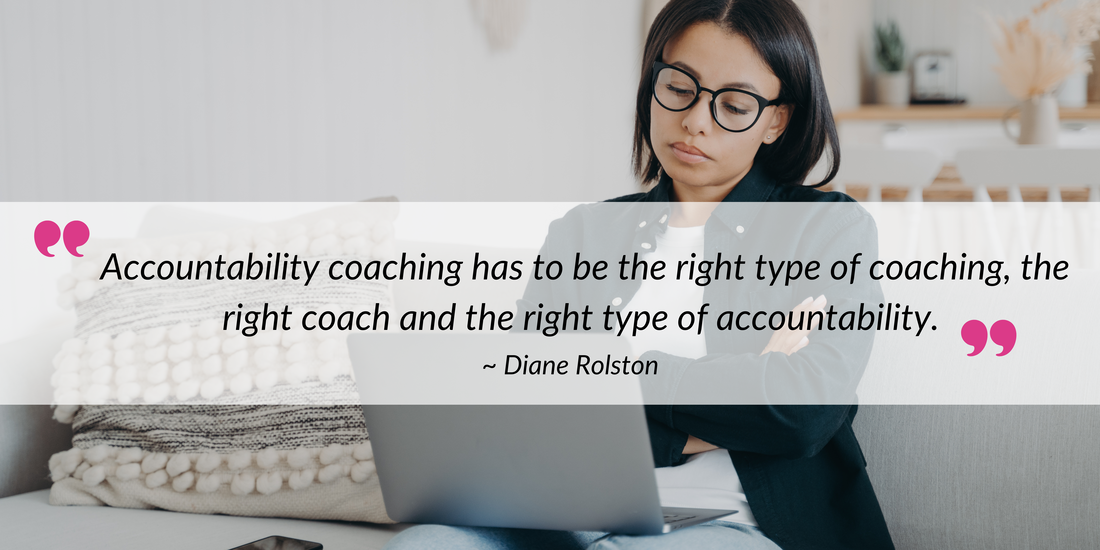
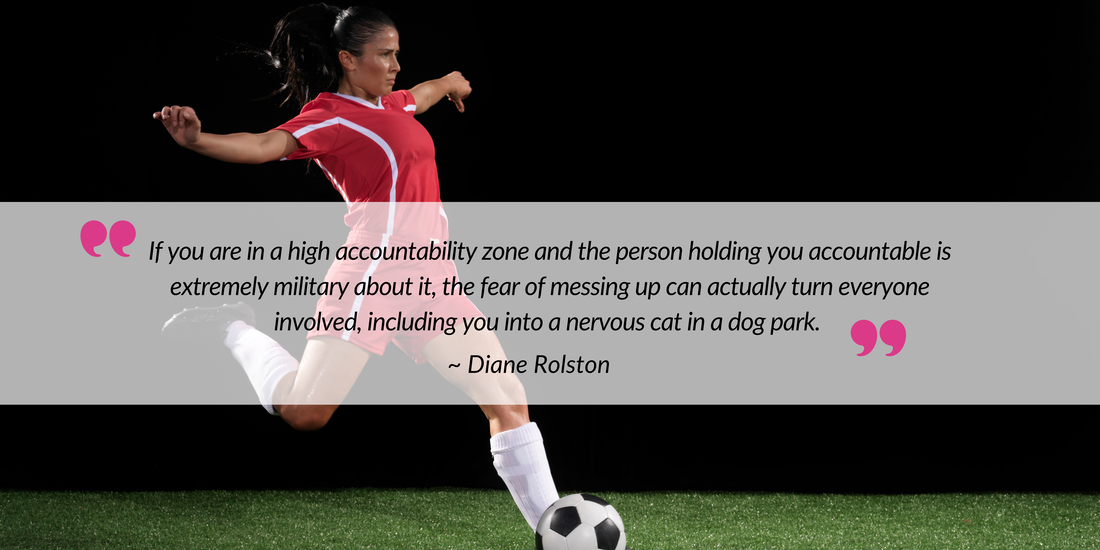
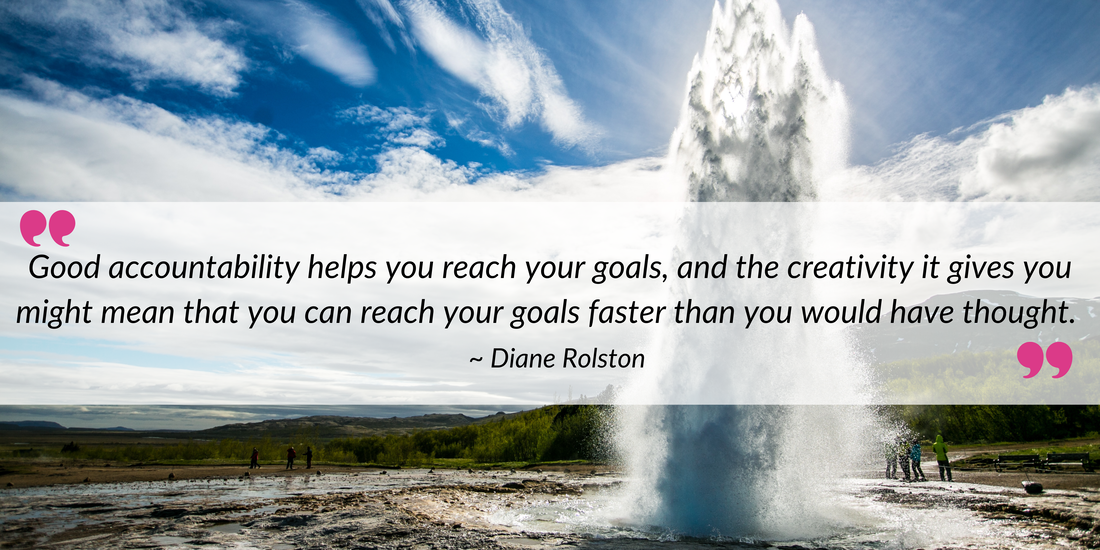


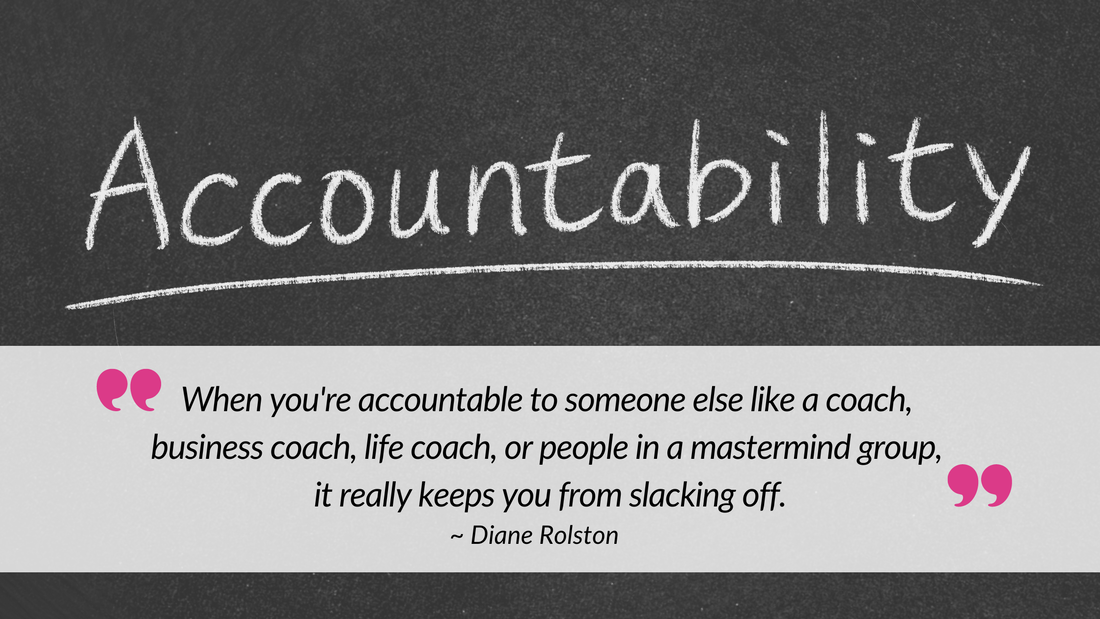
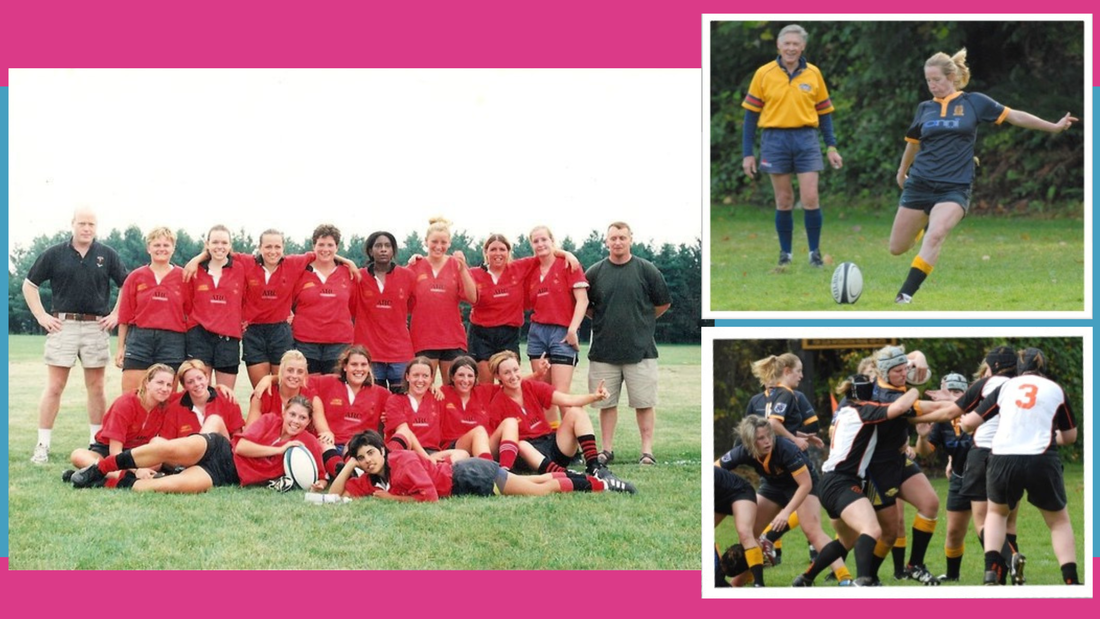
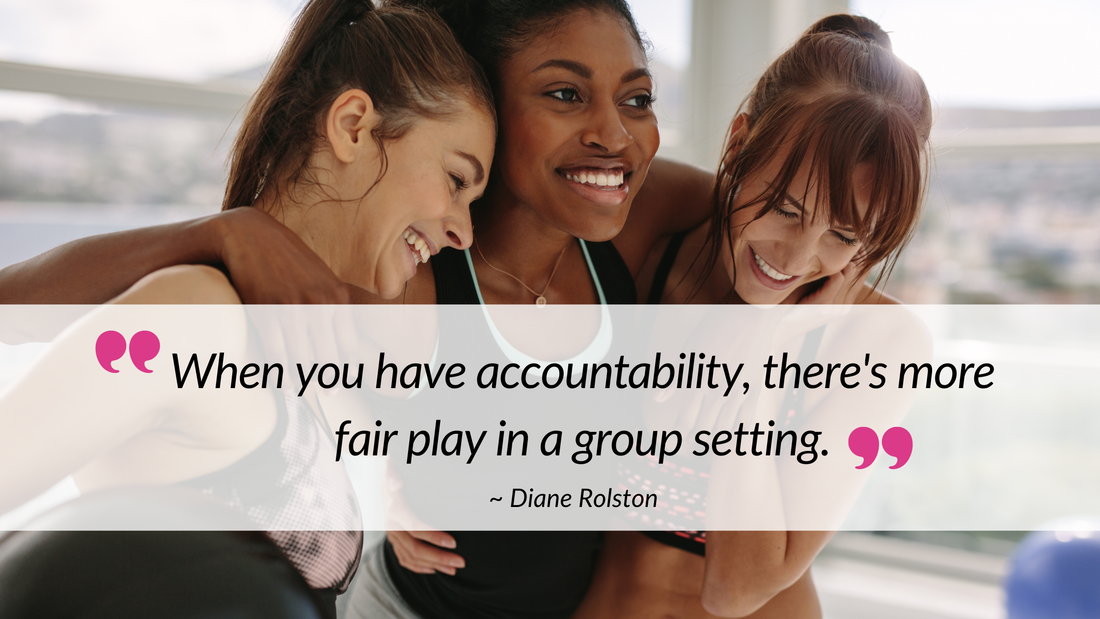
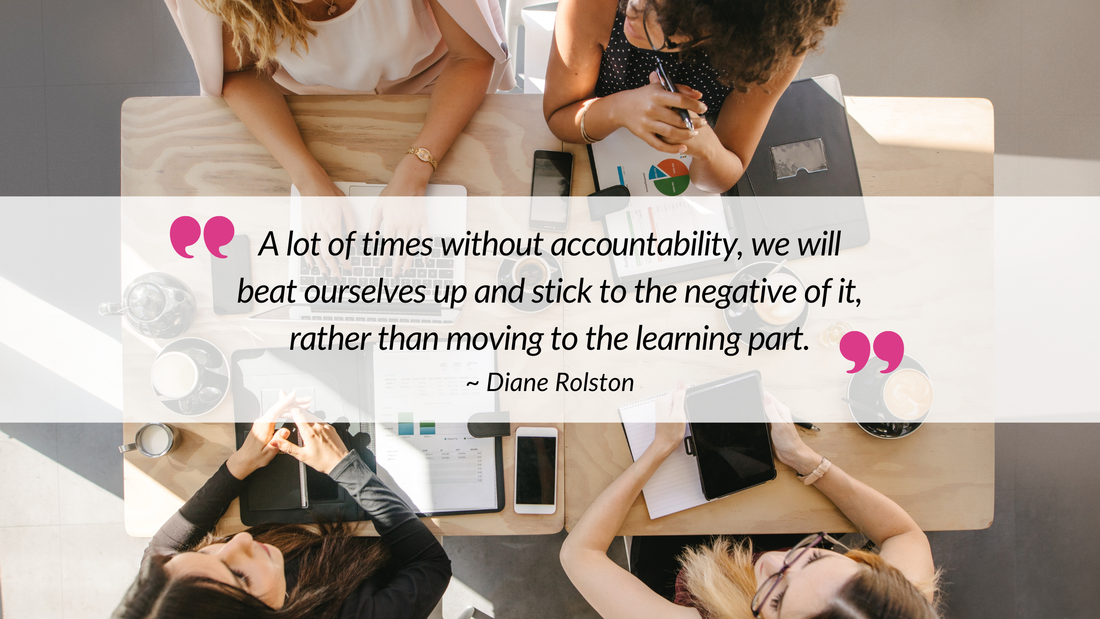




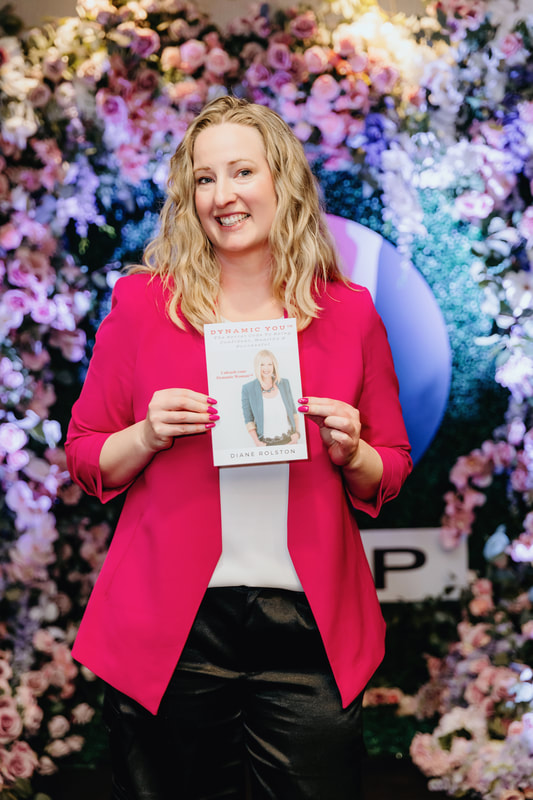

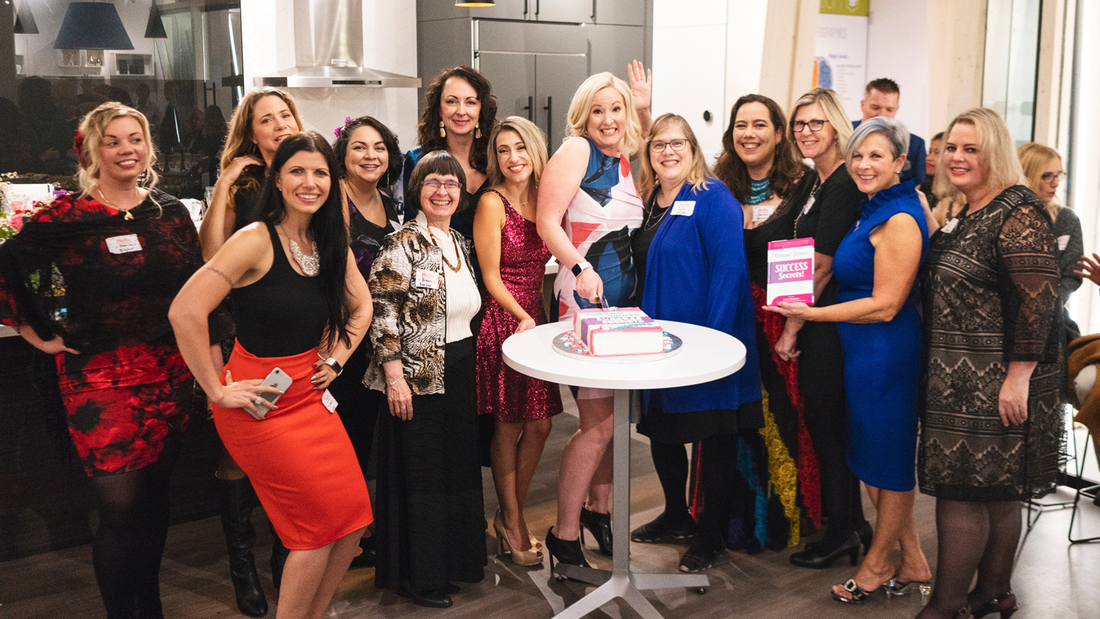
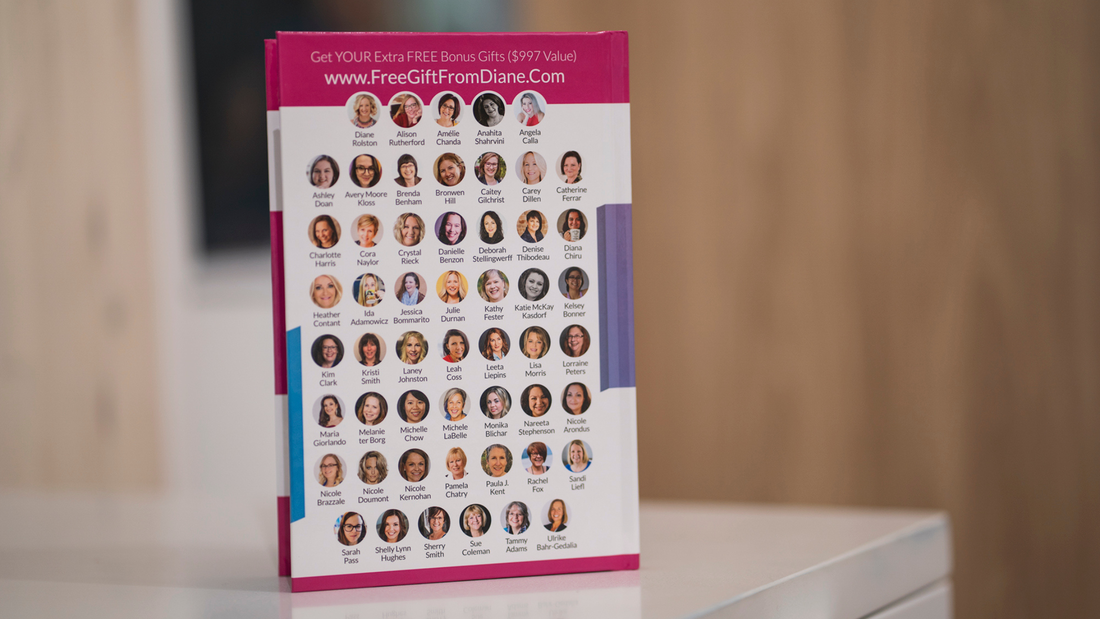
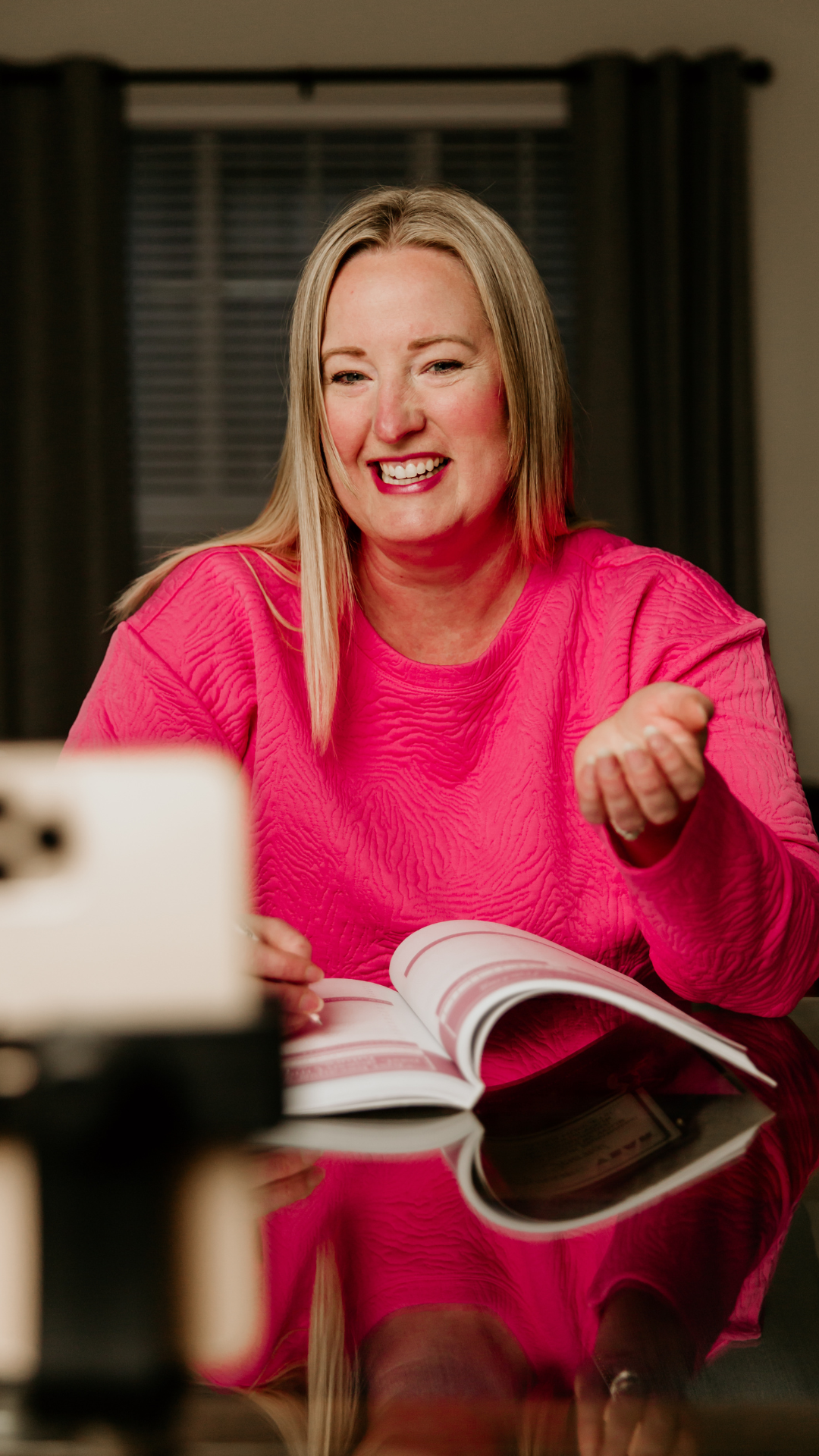
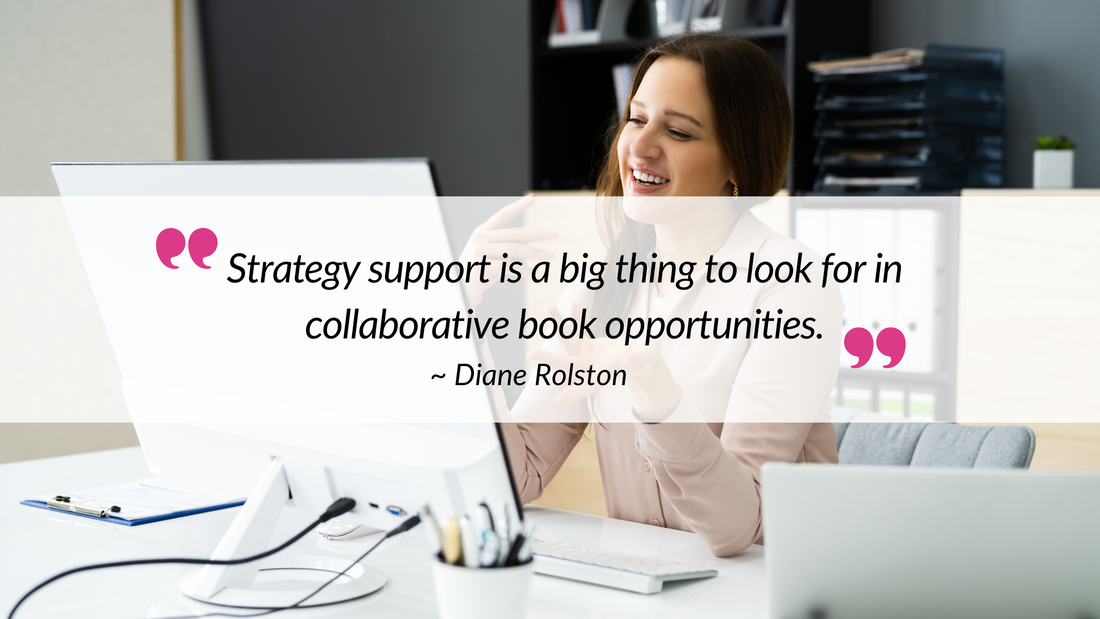
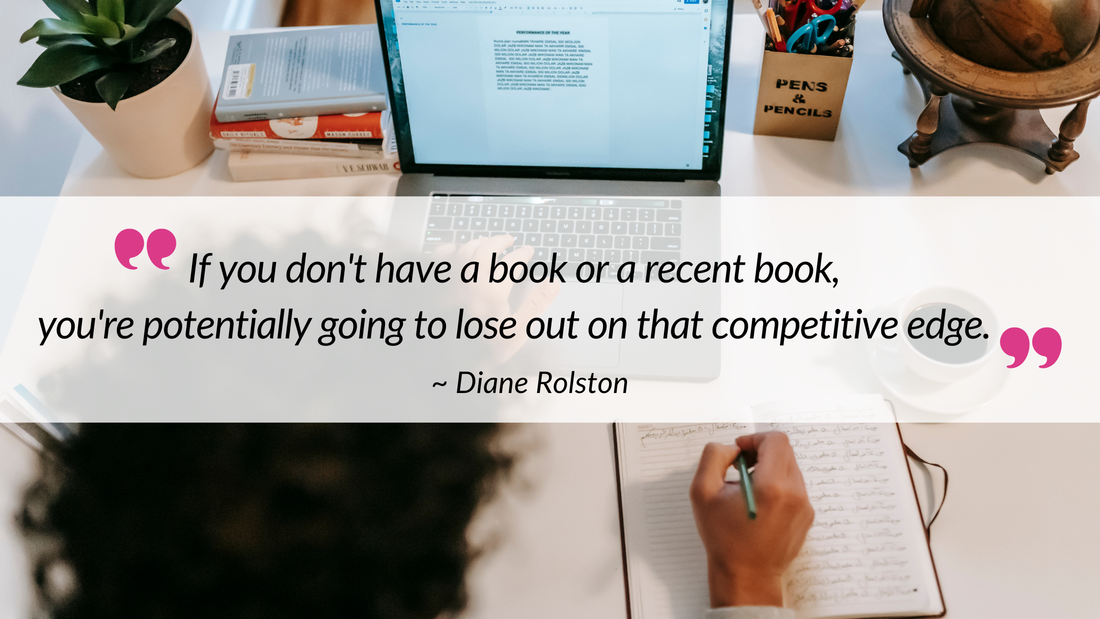

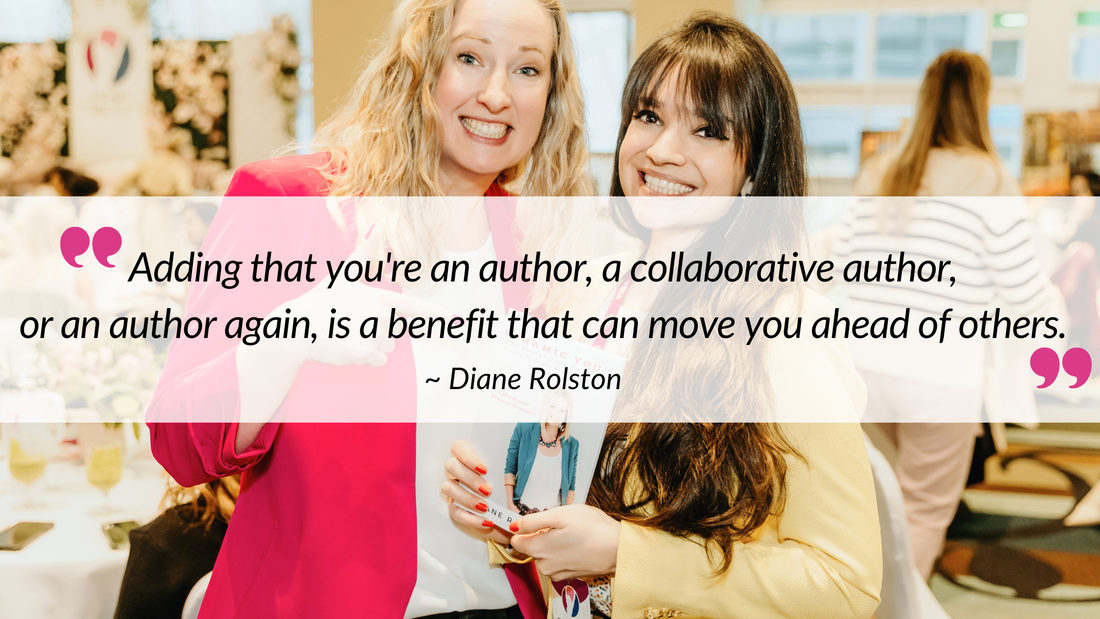
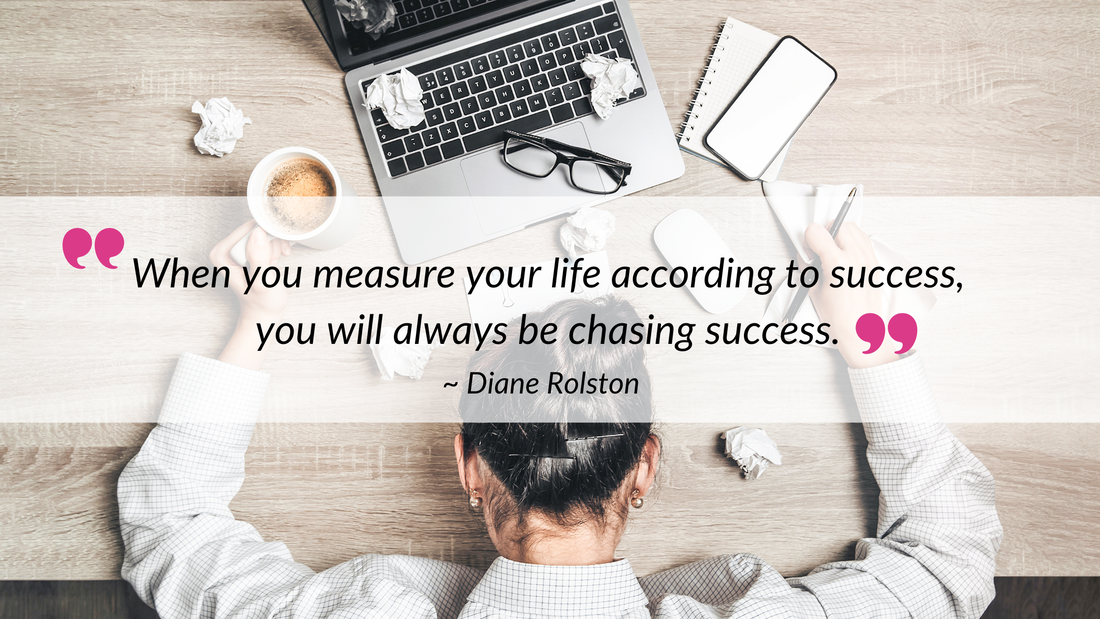
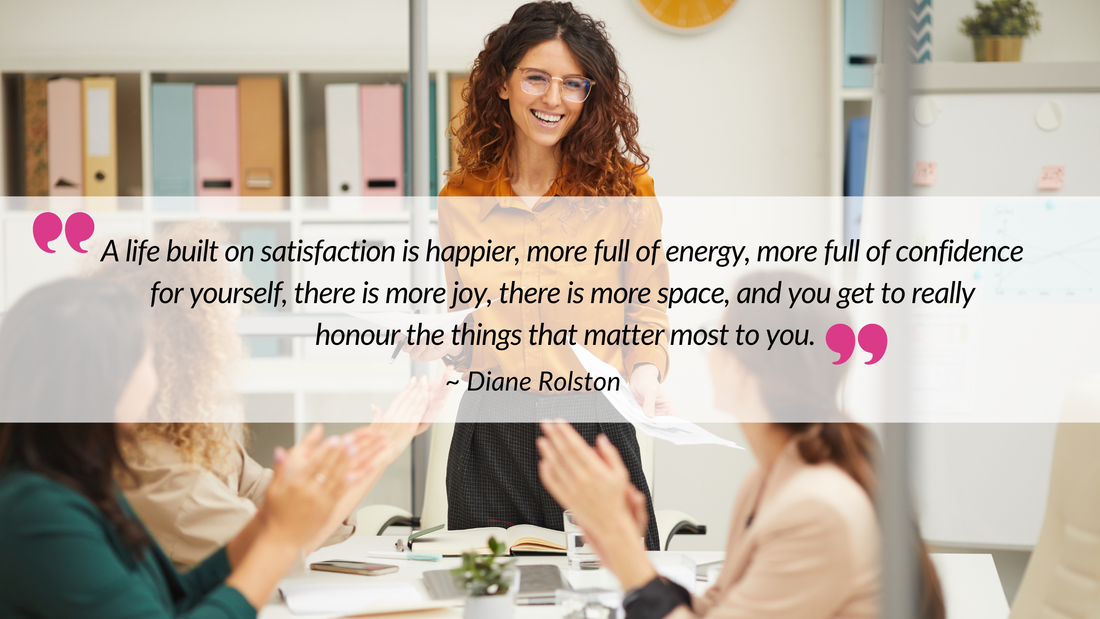
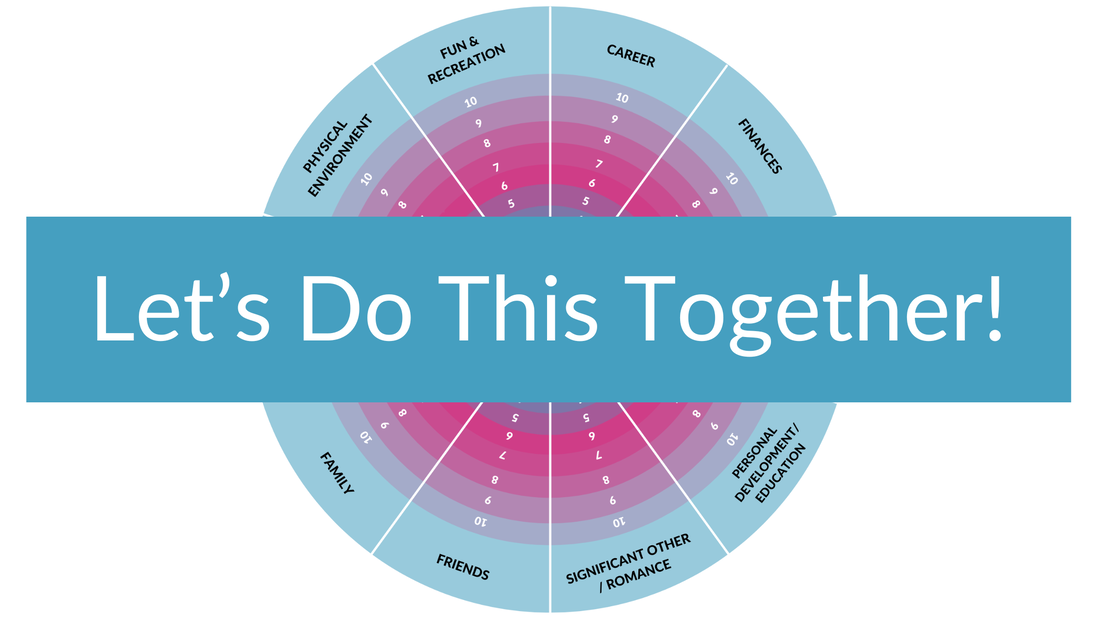
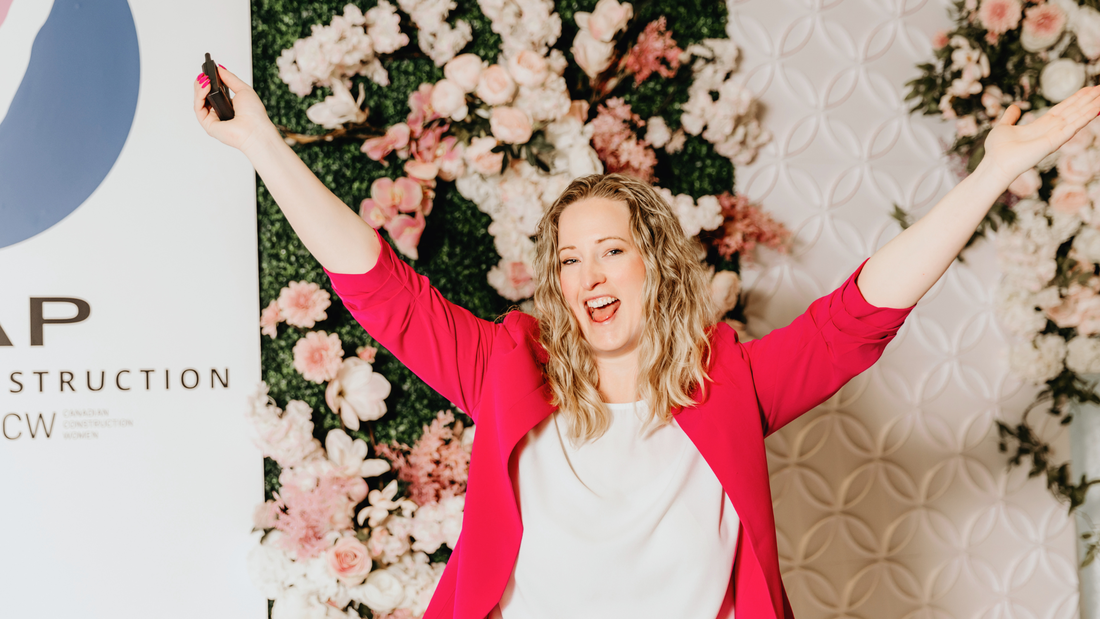
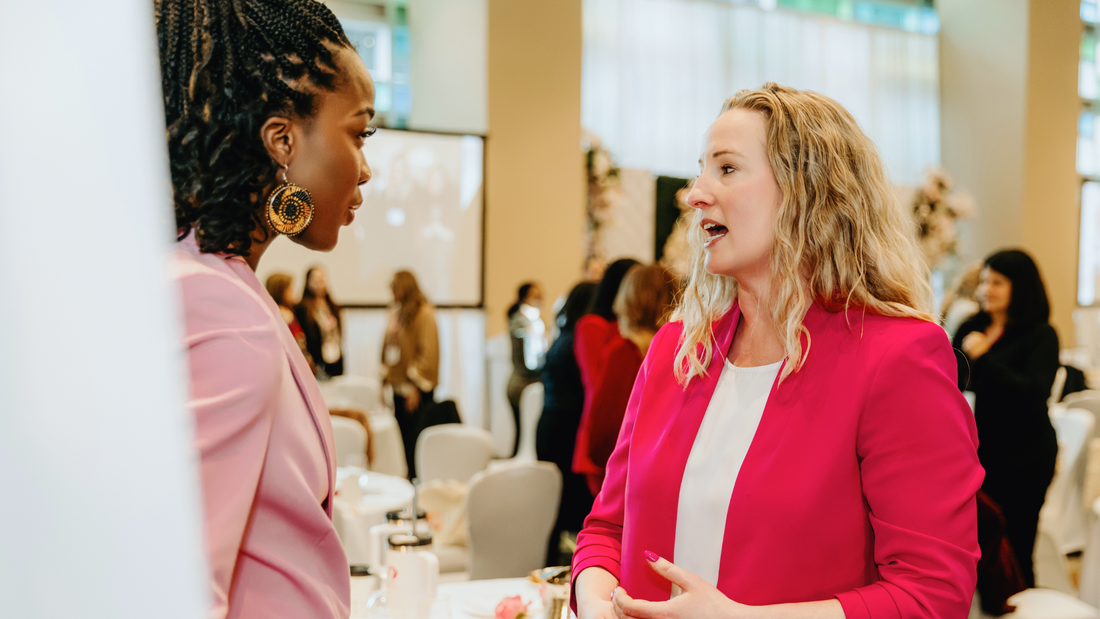

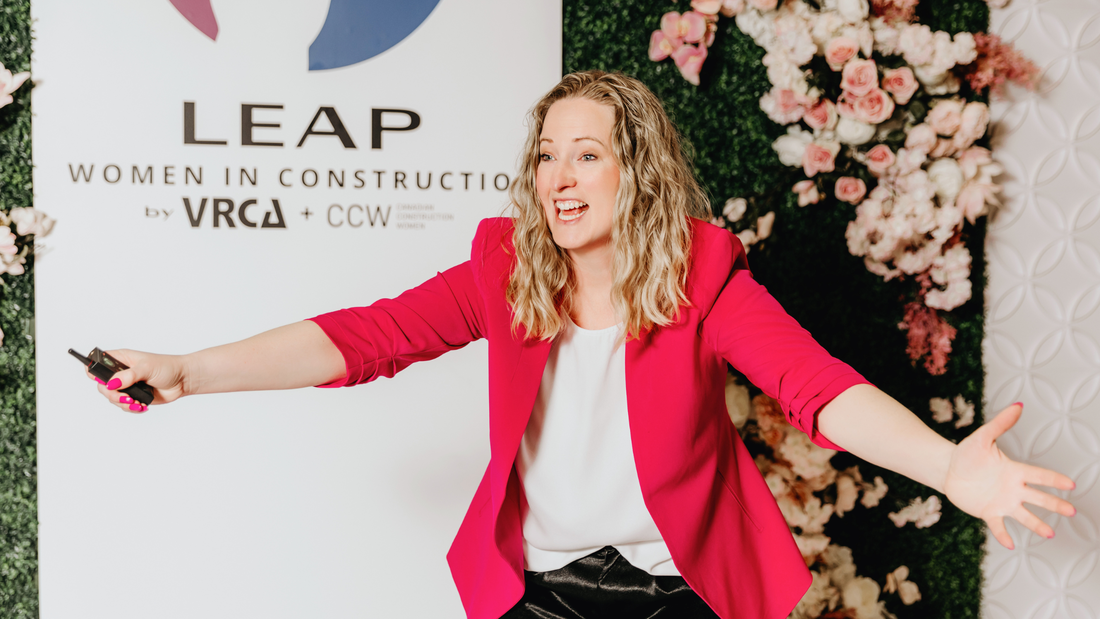




 RSS Feed
RSS Feed